Our two weeks family trip through Georgia part 1
Journey to Kakheti and the Greater Caucasus (27)
After three cosy weeks in our Tiny House in Marjanshvili in Tbilisi, the time had finally come at the end of July and we welcomed Lisa's parents at midnight at the airport. Despite the jet lag and the late hour, the first thing we had to do was to drink a glass of Georgian white wine in the garden to get in the mood for our trip together. We decided to try out a new form of travel for all of us - a tailor-made private trip with a tour guide and a driver. An unusual luxury for us and at the same time the most pleasant way to see a lot in a short time, because with the public marshrutkas (minibuses) we would probably still be stuck up in Svaneti or would never have made it up there at all. We put a customized trip together according to our wishes together with Sense of Travel in Zurich and MyCaucasus in Tbilisi, a travel company run by a Swiss.
On Sunday morning, the time had come and our German-speaking tour guide Nini and our driver Davit greeted us with a comfortable minibus with air-conditioning and off we went in the direction of the east, north and west and we are now taking you as readers with us on this varied journey across Georgia.
About Assyrian Fathers, border conflicts and lots of wine
First we head east to Kakheti. After only two hours of driving, a bumpy road leads us through a semi-desert with salt lakes and to the tiny settlement of Udabno. This is surprisingly a village inhabited by Svans, who were resettled from the region of Svaneti in the far northwest of the country after several avalanche disasters. They are considered to be extremely defensive and should probably secure the border to Azerbaijan here, and the whole thing happened only forty years ago. How must it feel like for them living here in such a foreign environment. It's a strange idea to move a community to the complete other end of the country.
Shortly afterwards we reach the cave monastery of David Gareja in a surreal landscape. David Gareja was one of the Thirteen Assyrian Fathers, our guide Nini tells us. But wait, which fathers? We had never heard of the Assyrian Fathers and we didn't know some other Georgian personalities either, who we will now meet again and again on our trip. And if you feel the same way and would like to visit Georgia, here is the ultimative "who is who" list:
-St. Nino (4th century): She brought Christianity to Georgia from Cappadocia together with her sad-looking grapevine cross, which she tied with her own hair. We encounter St. Nino or her cross again and again. As Nino is still highly worshipped today, her name is the most popular first name for women in Georgia.
-The Thirteen Assyrian Fathers were a group of monastic missionaries who came from Mesopotamia to what is now Georgia in the 6th century. They are said to have built numerous monasteries and churches.
-Davit, the Builder: The extremely eager Georgian king (11th and 12th century) founded the important monastery and academy of Gelati and drove the Seljuks out of Georgia.
-Queen Tamar of Georgia: She came to power in 1160 and her reign is considered the "Golden Age" of Georgia with the greatest expansion of power.
-Shota Rustaveli: The country's national poet and probably in love with Tamar. He wrote the national epic "The Knight in the Panther's Skin” which is still read in schools today and is probably familiar to all Georgians.
The stunning cave monastery is located on the Azerbaijani border, which caused a dispute in 2016 as there have been uncertainties about the exact course of the border and part of the monastery is supposed to be on Azerbaijani soil, so unfortunately the absolute highlight, the many cave dwellings, cannot be visited since 2018. Nevertheless, the visit is worthwhile for the spectacular location of the monastery in this semi-desert alone. David Gareja was one of the Thirteen Assyrian Fathers, who, according to legend, completed the Christianisation of Georgia in the 6th century. During this time, a complex irrigation system with water channels and cisterns was designed, which is still used today. The monks at this lonely location had an ascetic way of life far from everything, but the frescoes of Gareja became world-famous and are among the most important works of medieval painting in Georgia. Unfortunately, they can no longer be visited.
After a short drive we make a stop in the village of Badauri, which is apparently known for its many shoti bakeries. The traditional Georgian bread reminds us of a boat with its shape and is stuck to the wall in the clay oven called tone. The woman in the bakery sells around 200 bread loaves a day for a few cents each.
We reach Sighnaghi in the evening, which lies 750 metres above sea level and offers an impressive view of the Alazani Plateau, Georgia's wine plain. The medieval town has been spruced up with the help of former President Mikheil Saakashvili and is said to be one of the most popular places for weddings today. Just under 1500 inhabitants are said to live here, from wine production and tourism. The town offers a lot of charm with its cobbled streets, the village square lined with plane trees and the alleys overgrown with vines. Sighnaghi has the longest town wall in Georgia with 28 defence towers, which were also intended to protect the inhabitants of the surrounding villages from the attacks of Dagestani tribes. After so much sightseeing, it is time for a wine tasting at Okro's Natural Wine. We taste four different wines in all colour shades from white to amber and raspberry-pink to dark red. Of course, a Chacha is not to be missed. Yes, in Georgia you better be able to drink. Lisa's parents asked for a wine tasting in Georgia when planning our trip and that's what we got, almost every day a wine tasting was included, Gaumarjos!
And so we continue the next day. Besides a few monasteries and churches, we visit the Tamas winery in the small village of Akhalsopheli and learn a lot about the Georgians' elixir of life. Grape seeds were found in Georgia that are supposed to be 8000 years old, proving that Georgia is the cradle of viticulture. However, the Armenians also claim this.
In any case, it is no wonder that today people are so proud of the traditional wine production using the qvevri barrels, the handmade clay amphorae that are buried in the ground and in which the wine is stored together with the seeds, stalks and grape skins. The qvevri is sealed with wood, earth or, nowadays, with a glass plate and thus matures at a constant temperature for several months or years. This results in an amber-coloured organic wine that has got an unusual taste at the first sip. But the numerous wine tastings we had made sure, that we appreciate this special wine by now. Apparently, it is part of the tradition that a Qvevri is filled when a son is born and it’s only to be opened at his wedding and then served to the guests.
We drink homemade red and white wine and are then treated by a divine lunch, no coincidence, as guests in Georgia are supposed to be sent by God. There are all the great dishes of Georgian cuisine in front of us: tomato-cucumber salad, delicious khachapuri (cheese bread), meat kebabs mtsvadi, jonjoli and potulak, beetroot salad, ajapsandali (vegetable ratatouille) and chicken in tomato sauce. We’re too full to try the homemade chacha with tarragon afterwards. But we are immediately encouraged to get active again and try our hand at making churchkhela. This dessert is definitely a Georgian peculiarity. Walnuts or hazelnuts are carefully strung on a string and then dipped into a mix of flour and grape juice. You have to pull them out as quickly as possible and hang it up to dry, which looks funny and tastes fantastic. But it is not that easy. Shortly afterwards, we see how it should actually look like in the large market of Telavi at the various churchkhela stalls.
From the Kakheti wine plain, a long day's drive takes us up to Stepantsminda, only 12 km away from the Russian border. After a 25 km gravel road, we also reach the Georgian Military Highway, the only north-south connection through the Greater Caucasus and already an important trade route in former times. In the past, it took three days by a horse carriage, but today it takes only about 4 hours from Tbilisi to reach the heart of the Great Caucasus. Compared to other mountain regions, Stepantsminda is therefore quite easy to reach and correspondingly touristy. As the only land link between the Trans-Caucasus region and Russia, the highway is still an important thoroughfare.
Our first stop on the Georgian Military Highway is the impressive Aranuri Fortress at the Zhinvali Reservoir. On the outer walls of the church you can see the curved Georgian characters. Officially, three Georgian alphabets were known until now, but now a tablet has been found with unknown characters that point to a fourth Georgian script, which is said to be reminiscent of Egyptian hieroglyphics. It is still unclear how old this script is, but who knows, maybe Georgia will soon also be the country with the oldest script and not only with the oldest wine tradition?
Via Pasanauri, which is known for its many Khinkali restaurants, we reach the ugly ski resort of Gudauri and, shortly before the Jvari Pass, the Russia-Georgia Friendship Monument. The whole thing is typically Soviet, very gigantic and almost somewhat distracting from the gorgeous surrounding landscape. There is a lot going on here, with numerous tourists from the Arab Emirates or India, and there is a lot on offer for the guests, with paragliding, pony rides and, of course, a photo with a parrot. The hustle and bustle almost distracts from the beautiful view over the Devil's Gorge.
We reach the Jvari Pass (2379 meters) and can look down from here to South Ossetia, the self-proclaimed republic that was detached from Georgia in the 5-day Georgian-Russian War in 2008. Even today, the border fence is apparently moved a little every day, ensuring that Georgia has less and less territory. In the meantime, Moscow finances about 90 percent of the South Ossetian state budget and especially young people who want to study are leaving the country for Moscow due to a lack of prospects. They could also travel to Georgia, but not back to South Ossetia afterwards. It is also not possible for tourists to enter South Ossetia, which often does not make it easier to choose a route, because the region is in the middle of Georgia. For us, this conflict is very difficult to understand.
After the Jvari Pass it’s not far to the tourist town of Stepantsminda or Kazbegi, which has 1500 inhabitants and many guesthouses and restaurants. From our guesthouse we have a fantastic view of Kazbeg, the second highest mountain in Georgia at 5054 metres. Of course, we go out on the balcony first thing in the morning to watch the sunrise over Mt. Kazbeg.
From the village of Gergeti we walk through a beautiful forest up to the church and suddenly it is in front of us: the iconic image of Georgia, the Gergeti Trinity Church, with its incomparably photogenic hilltop setting with the mighty mountains behind it. How many tourists travel to Georgia just because of this panorama? Unfortunately, the many cars disturb the picture somewhat and we would have imagined the church to be somehow more remote. Sometimes pictures can be deceptive.
The complex includes the domed church, the council building and the 14th century bell tower. But much more impressive is the great view of the surroundings as well as the hike up. We take a much steeper path back down, which is full of loose stones.
Then we continue to the Darial Gorge north of Stepantsminda and up to the Russian border. It is a special feeling that Chechnya is supposed to be behind the border post in the narrow gorge. We regret a little not being here with our bicycles, because the route would be spectacular and wild. In the evening we enjoy a fantastic meal at the Rooms Hotel, a former Russian sanatorium, with sauna and whirlpool.
Our recommendation: Hiking in the Truso Valley
On the way back, we take a hike in the Truso Valley, definitely one of our scenic highlights on this trip. The path is easy to follow and always leads along the river, first through a gorge and then into the wide open valley. Here you will find mineral springs, an abandoned village and a nunnery. It looks beautiful. The rocks seem to be painted with colours in some places and mineral deposits lead to white terraces like you might know from pictures from Pamukkale in Turkey. On the green slopes you can always see goats leading the way for the sheep and of course there are the famous Caucasian shepherd dogs near the flocks, which you should not get too close to. A few families from Azerbaijan spend the summer here with their animals and live in very simple conditions during this time. At the end of the path is the Zakagori fortress, after which the border to South Ossetia is already there and it is no longer possible to continue. Again and again you see individual groups of hikers, and yet the valley is wonderfully quiet, lonely and simply magical.
Beautiful evening atmosphere in Mtskheta
In the evening we arrive in Mtskheta (approx. 8'000 inhabitants), the former capital of Georgia and the religious centre. Two main sights stand out immediately: the Jvari Church on the hill and the Svetitskoveli Cathedral, the second largest cathedral in Georgia. We drive up to the Jvari Church, a popular spot for wedding photos. The oldest cross-domed church in the country was built 1500 years ago and served as a model for many religious buildings in Georgia. It is a special place with a great view of Mtskheta and the confluence of the Kura and Aragvi rivers, which meet here. When do you think we will reach the point where we have seen enough churches and monasteries? Surprisingly, it is always interesting for us, which of course also has to do with our tour guide Nini, who always has numerous stories to tell. It is also fascinating to observe the role the Orthodox Church plays in the life of Georgians. We only know that there must be a church somewhere, because our driver crosses himself quite often.

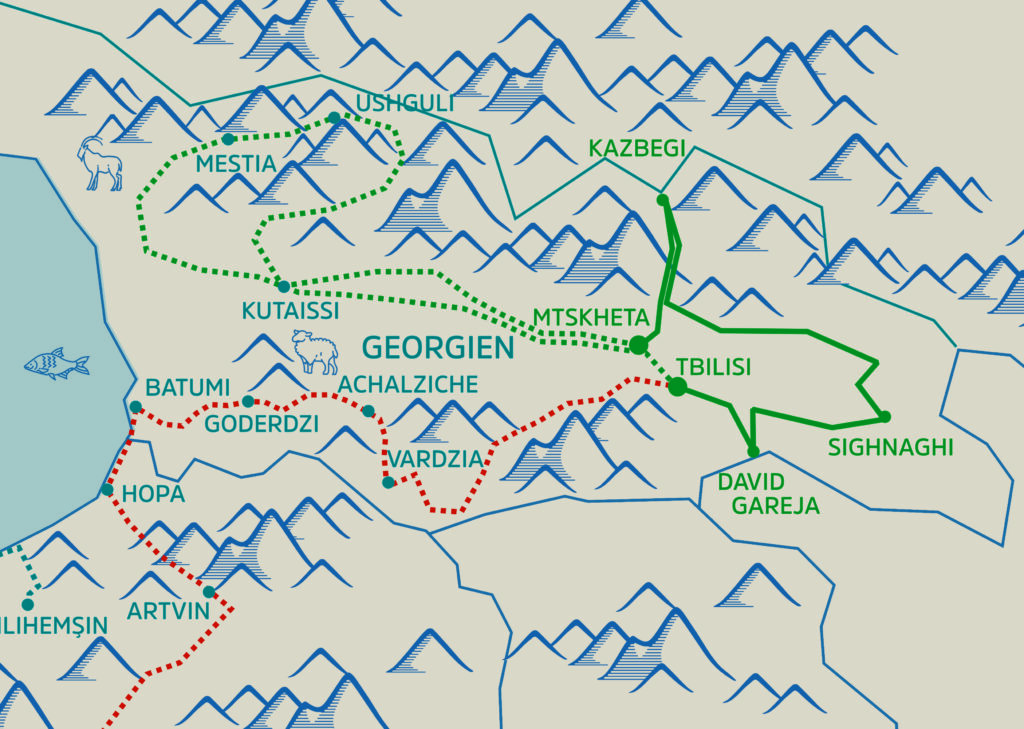
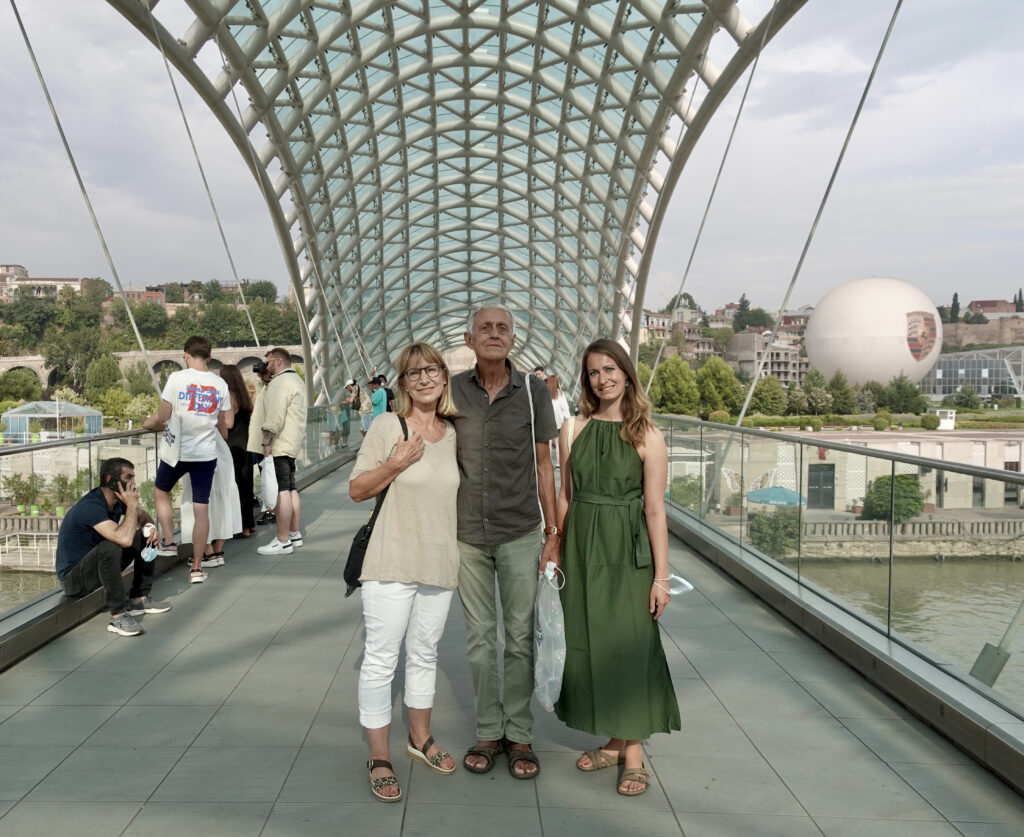
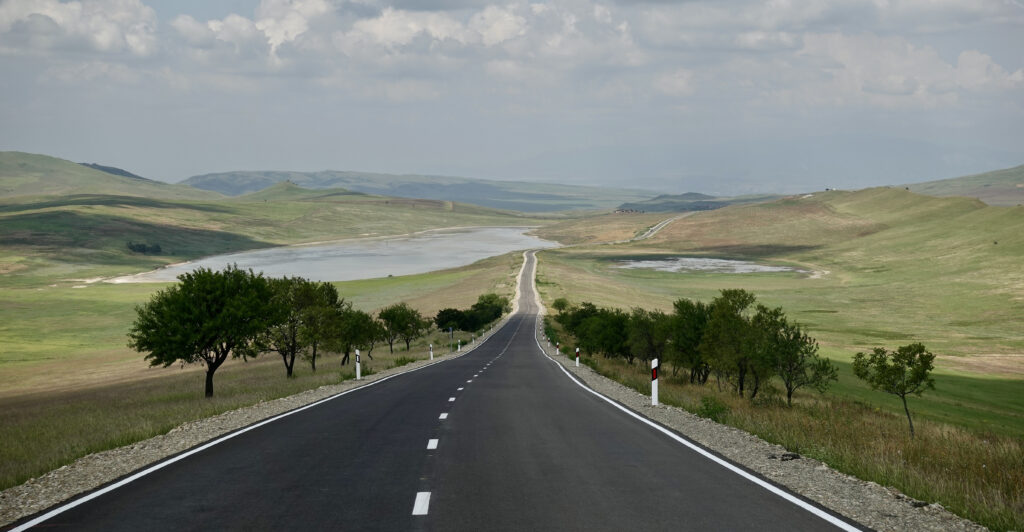
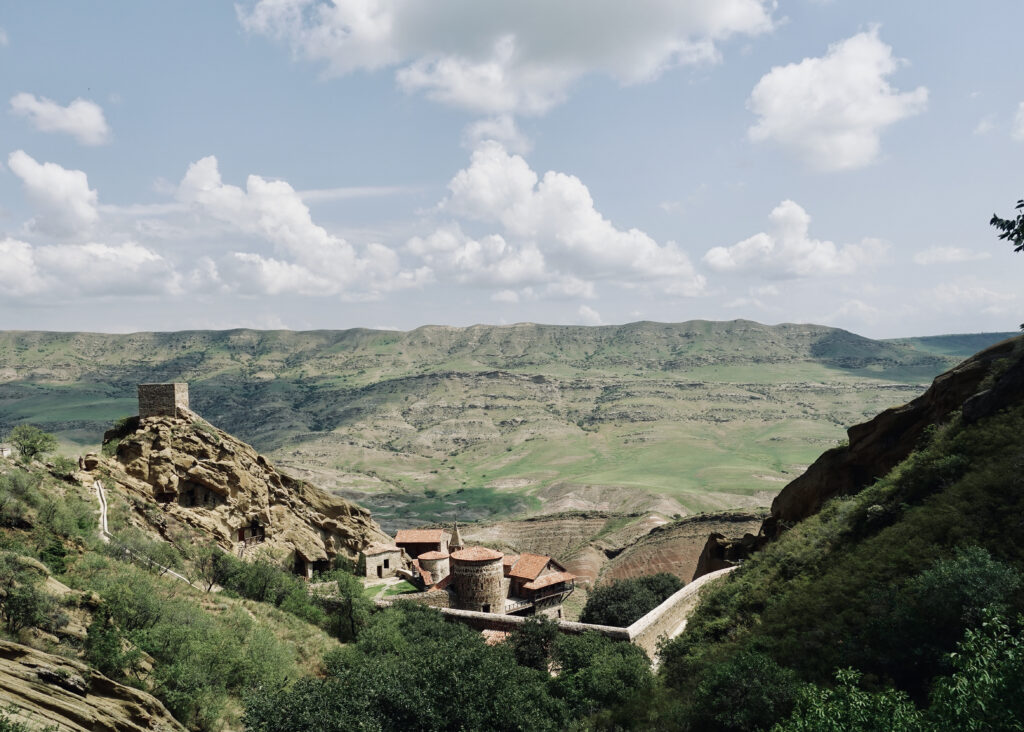
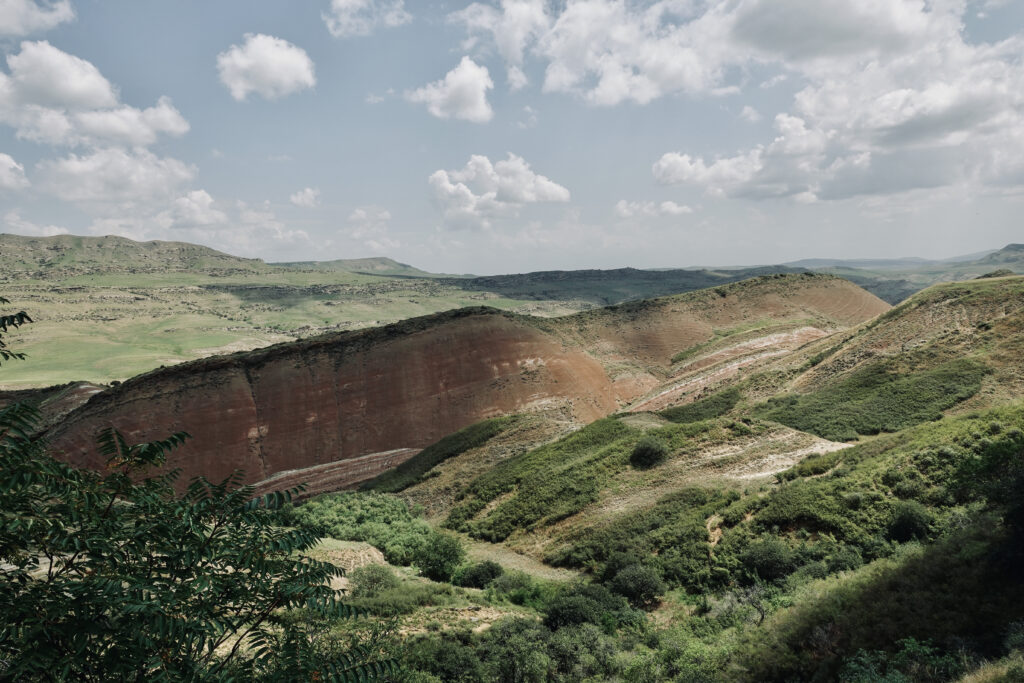
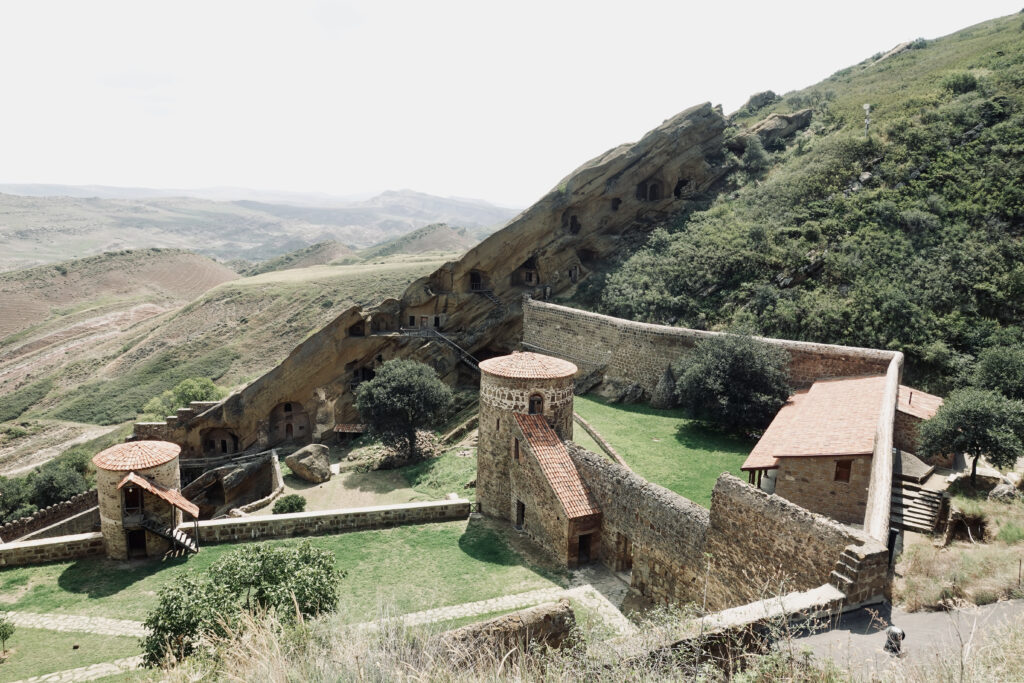
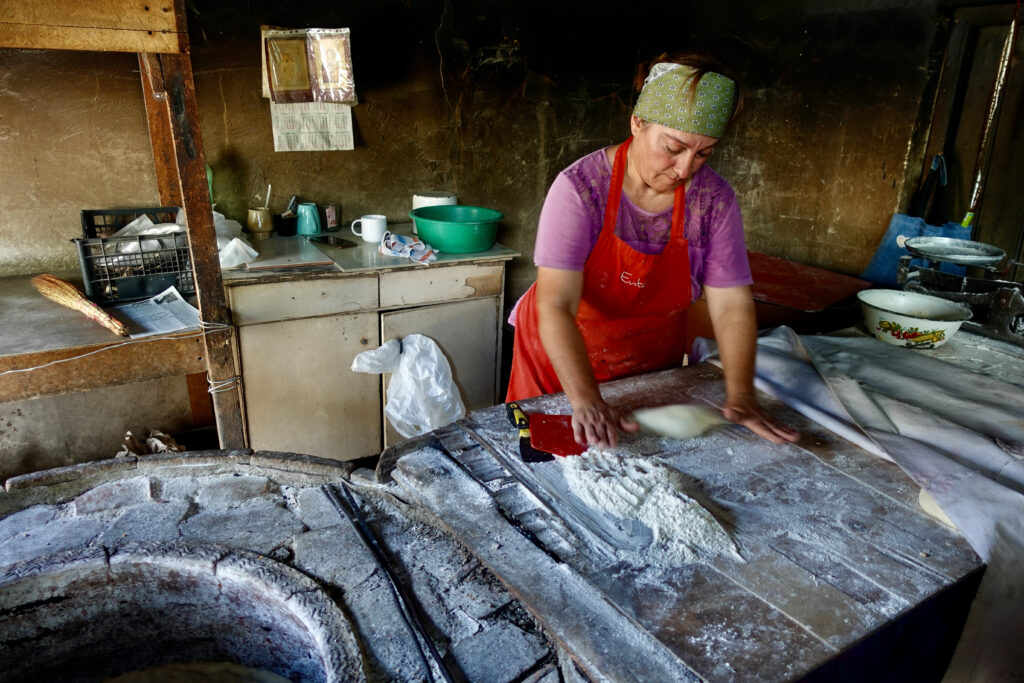
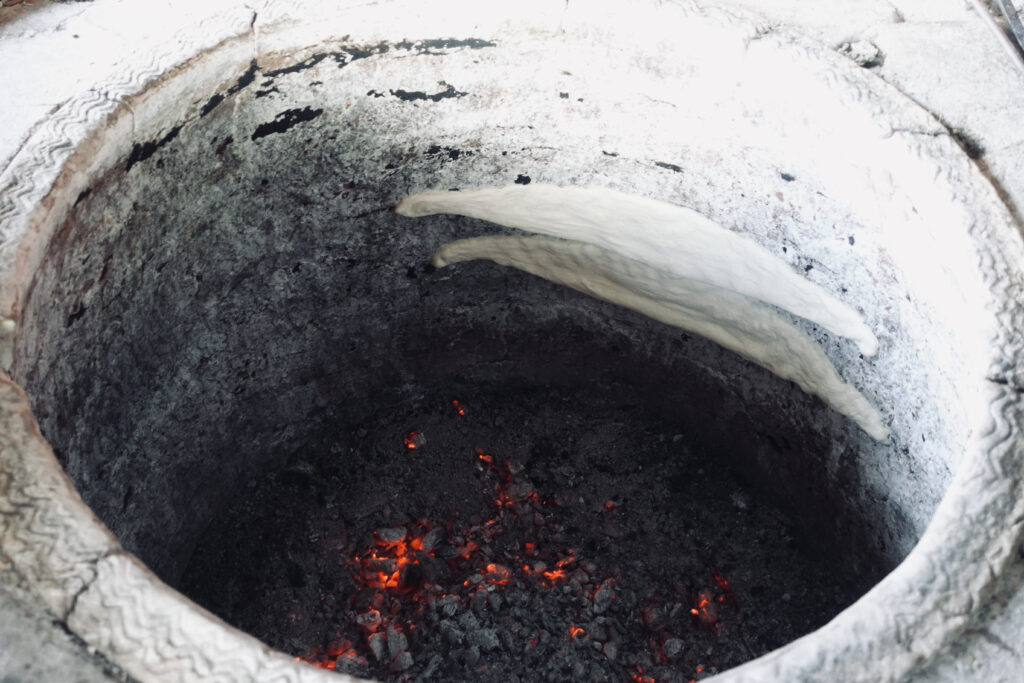
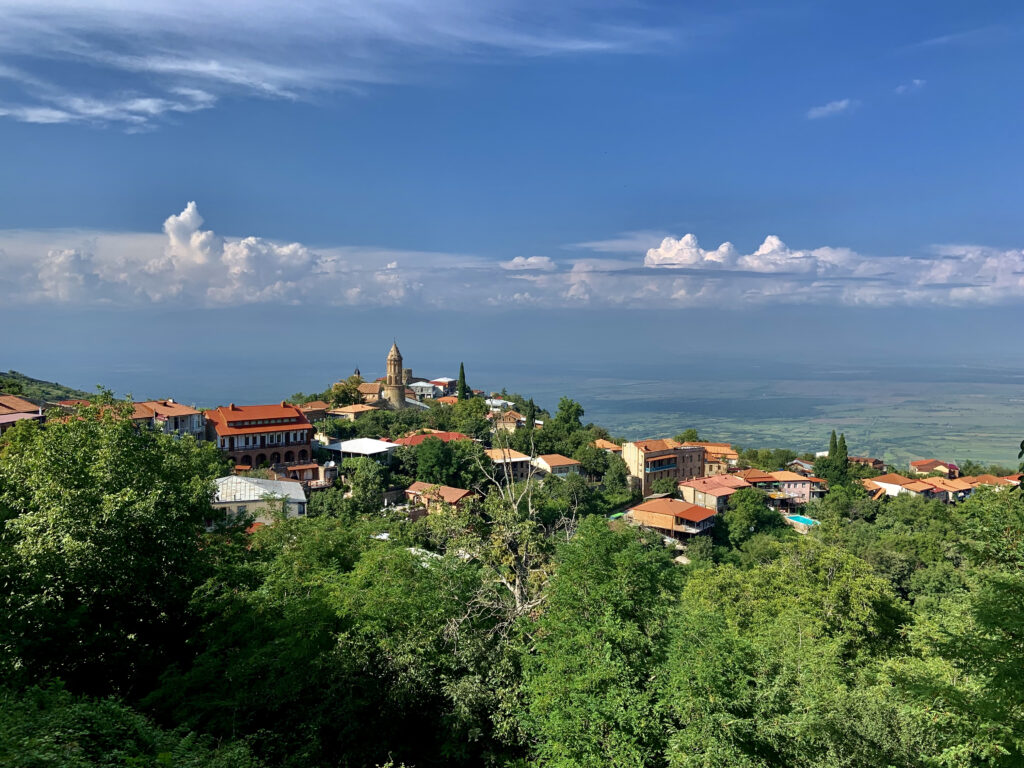
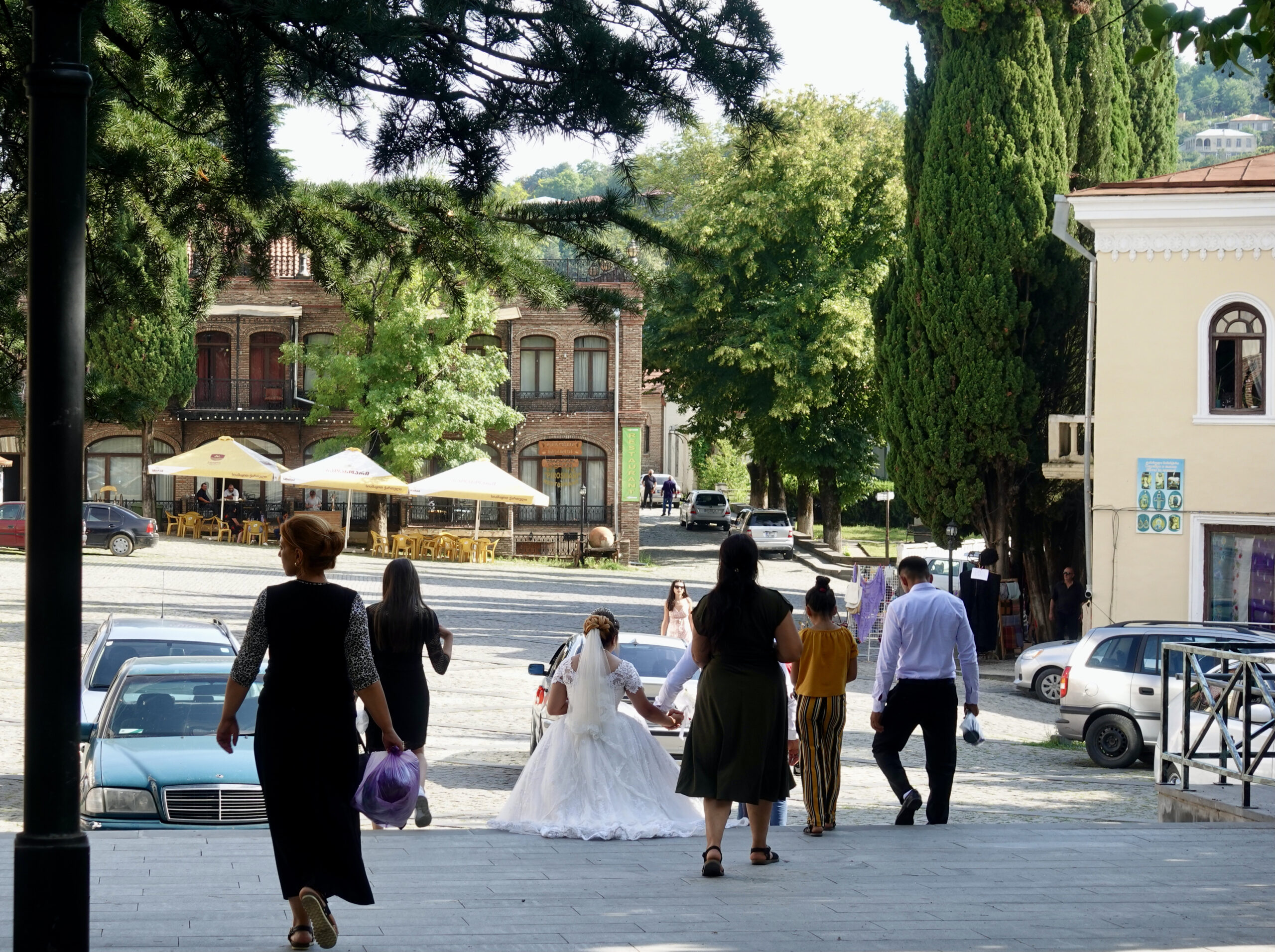
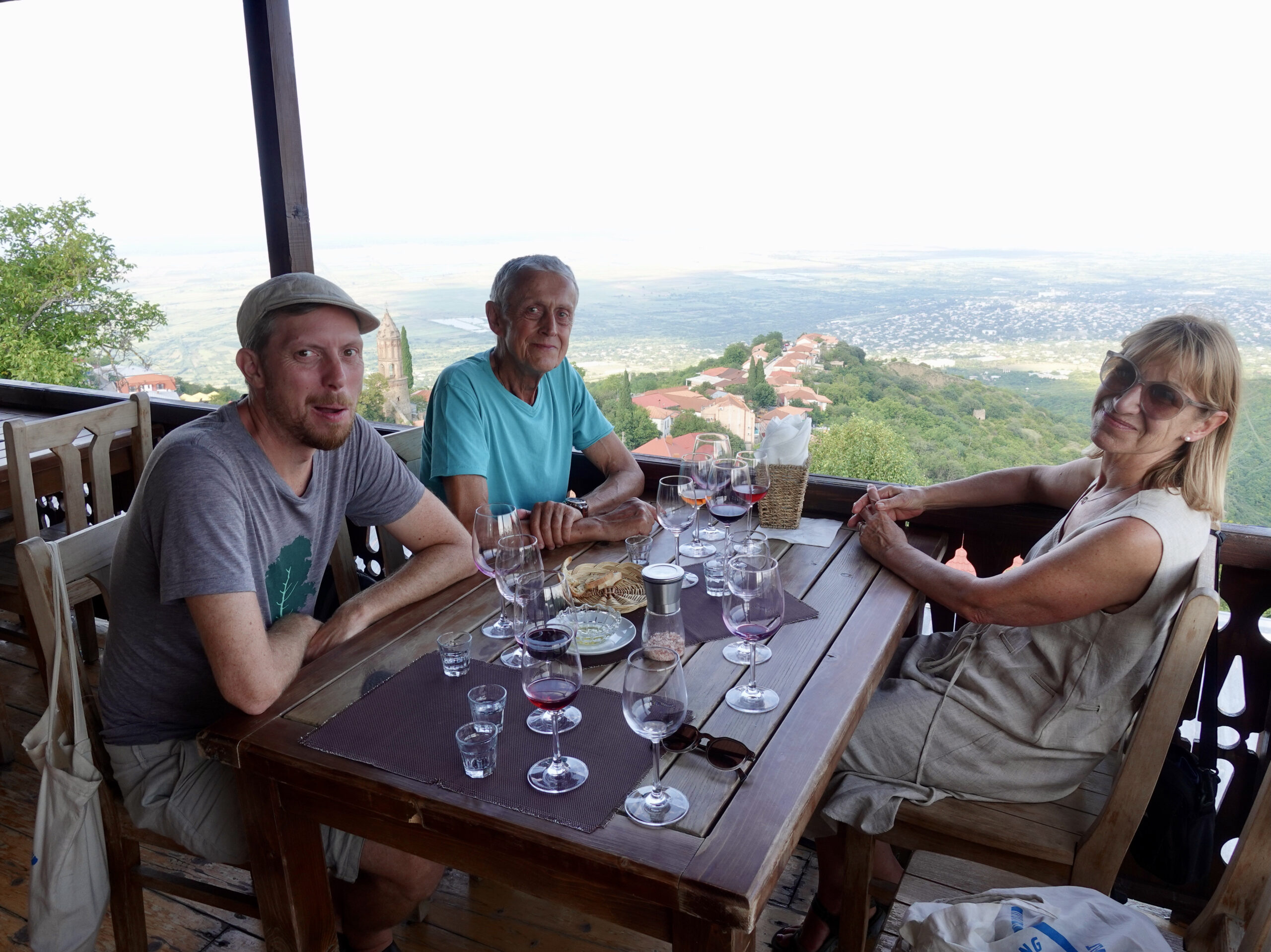
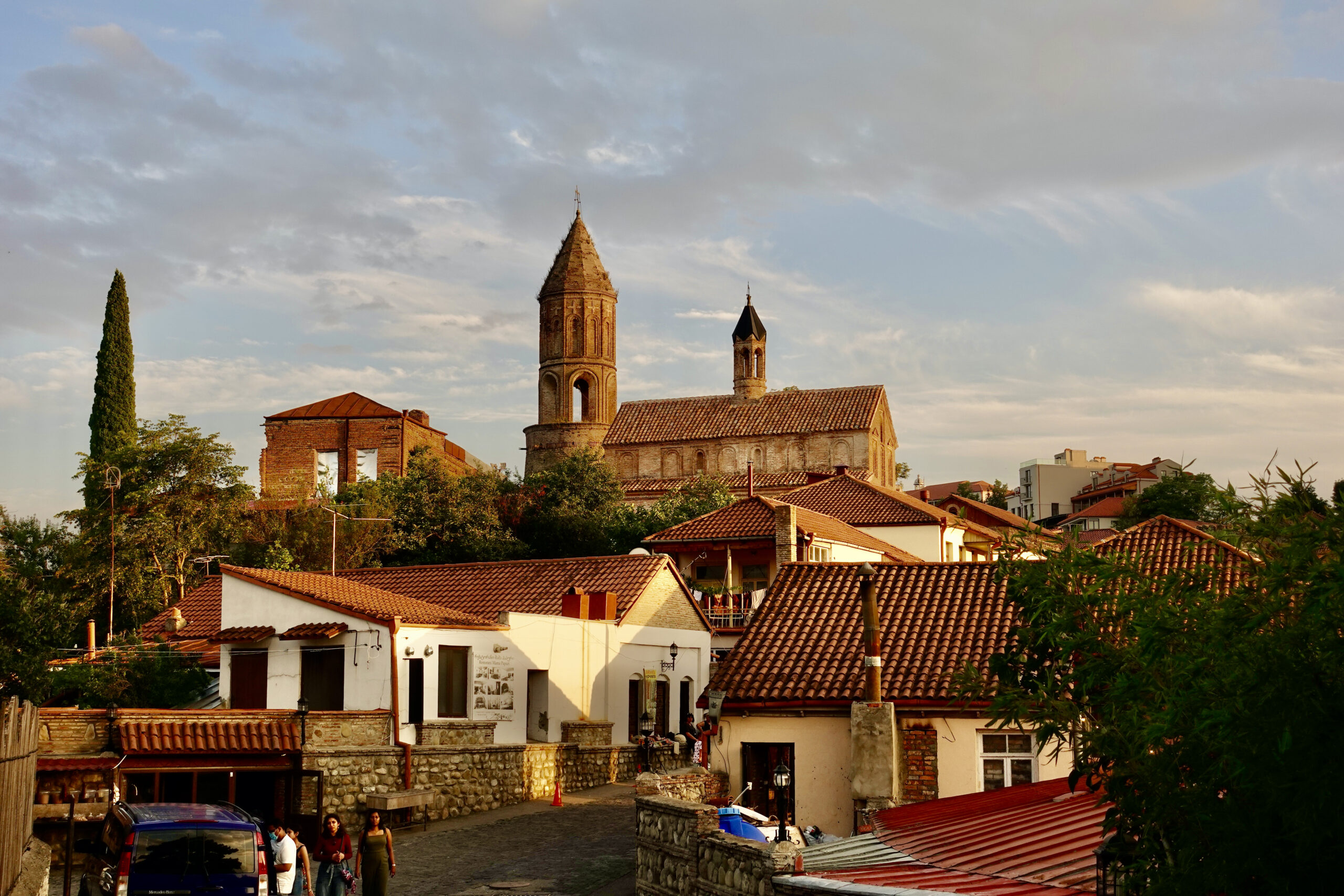
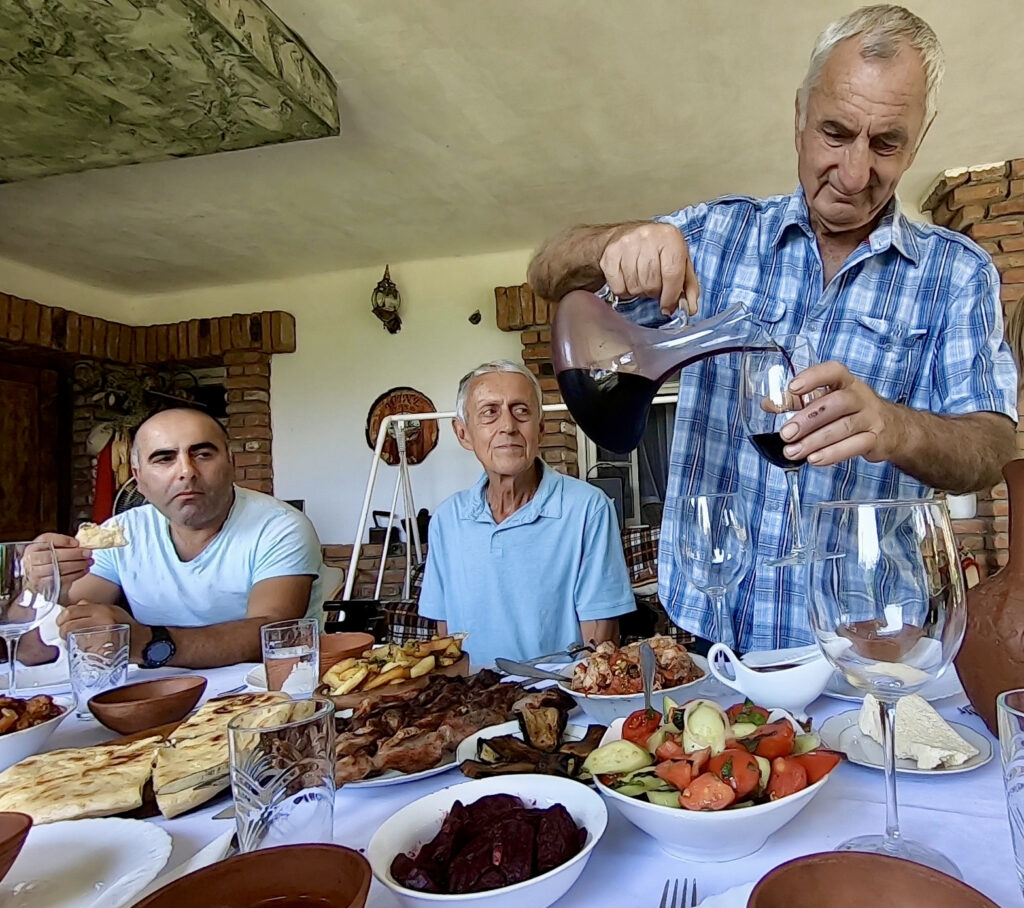
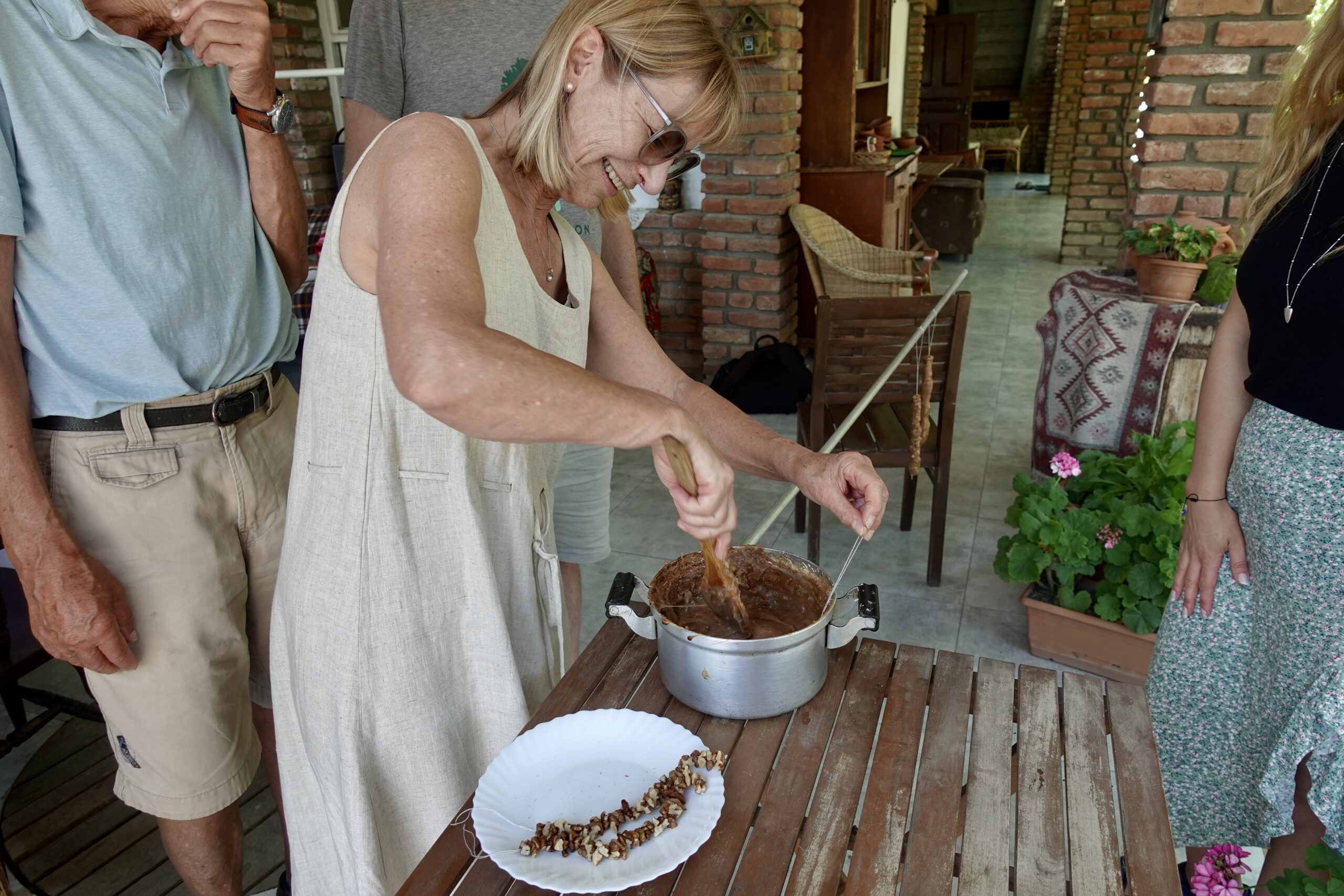
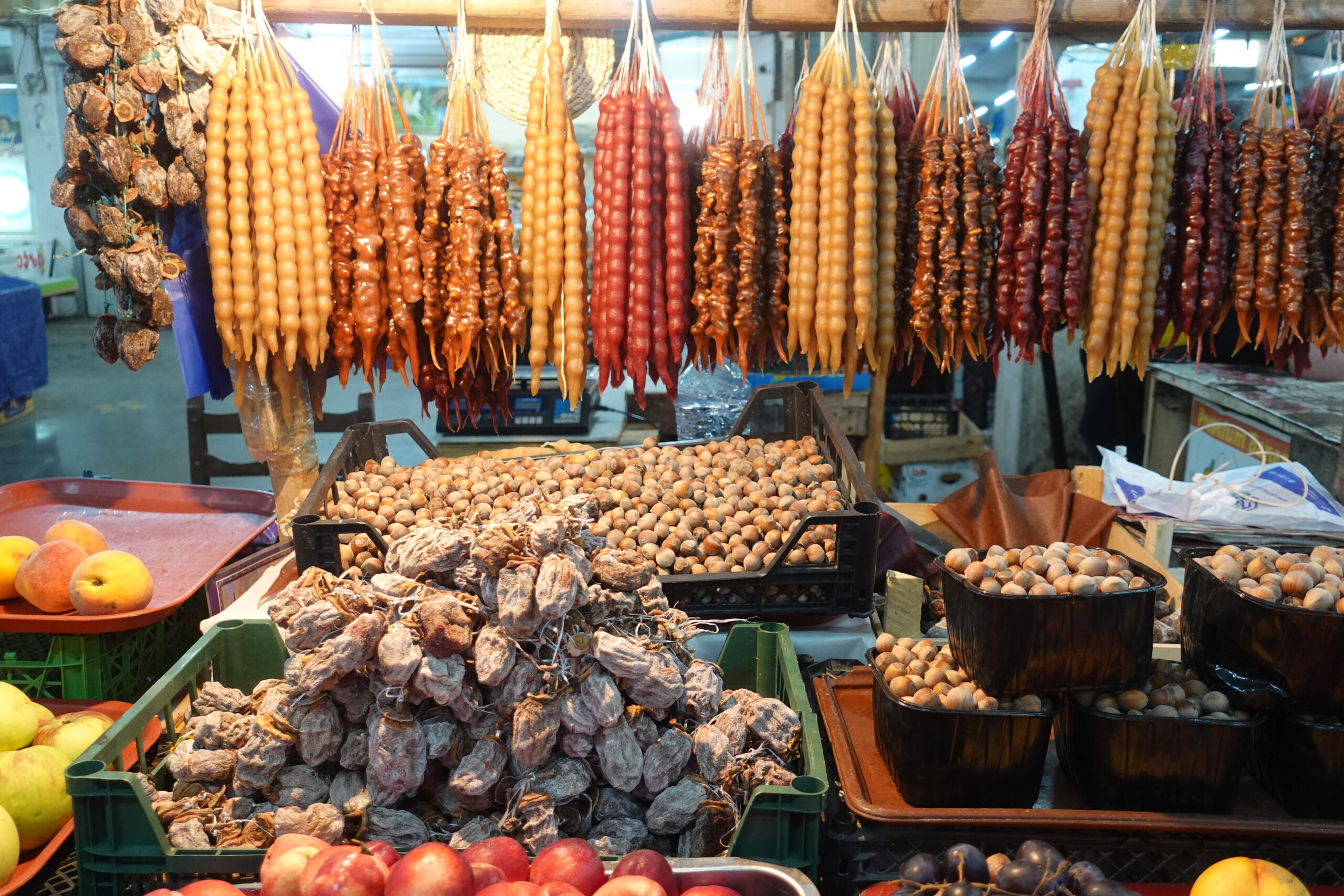
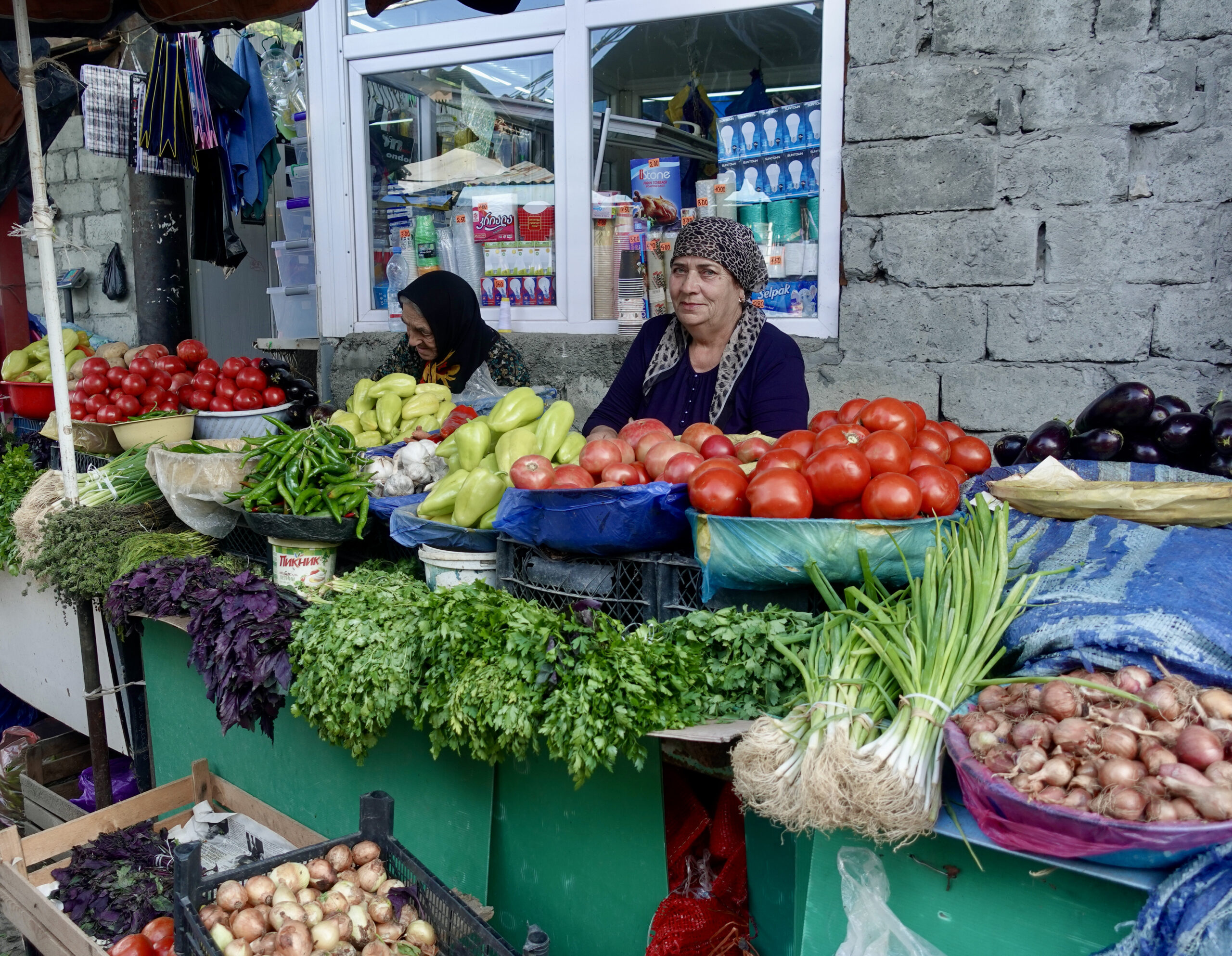
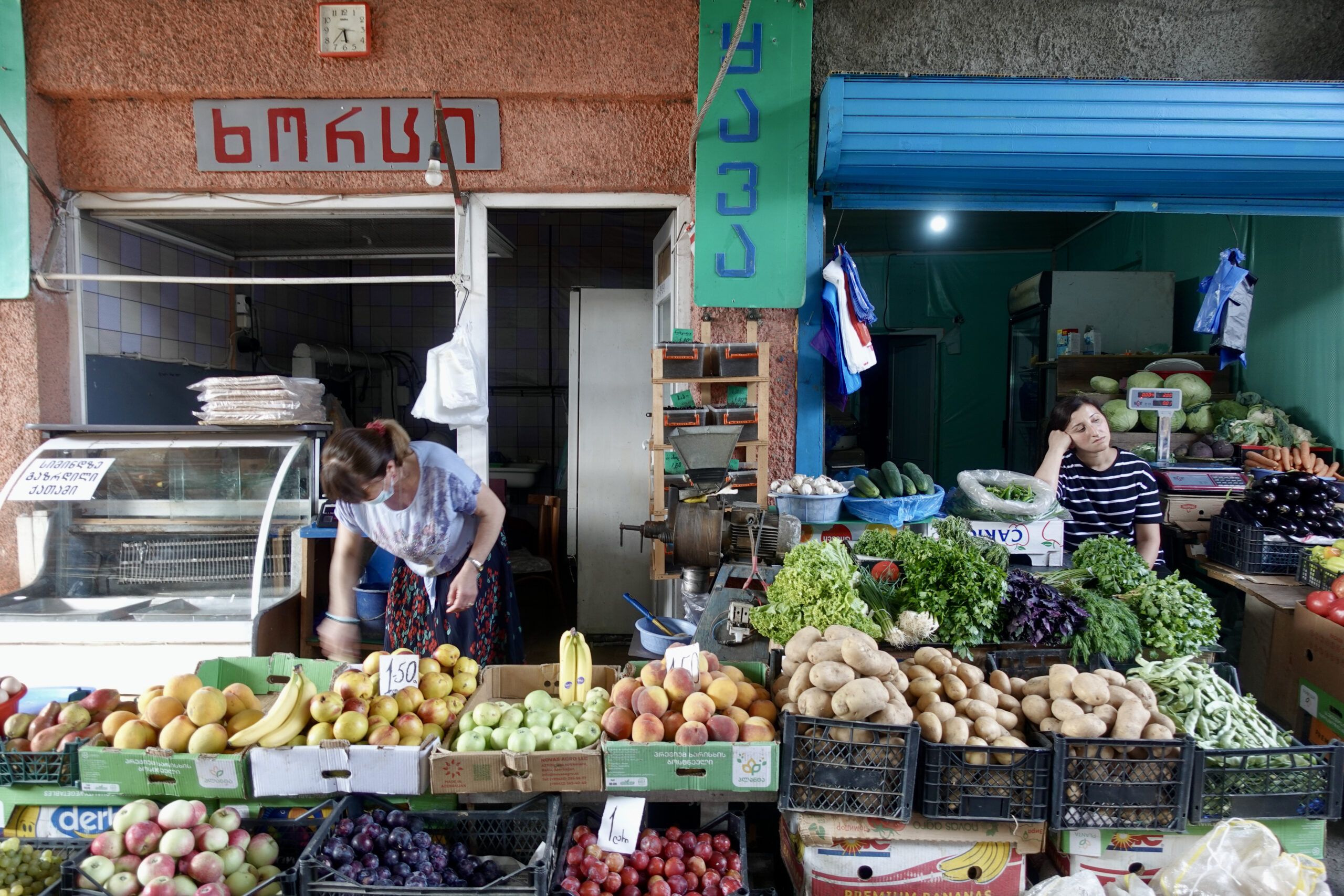
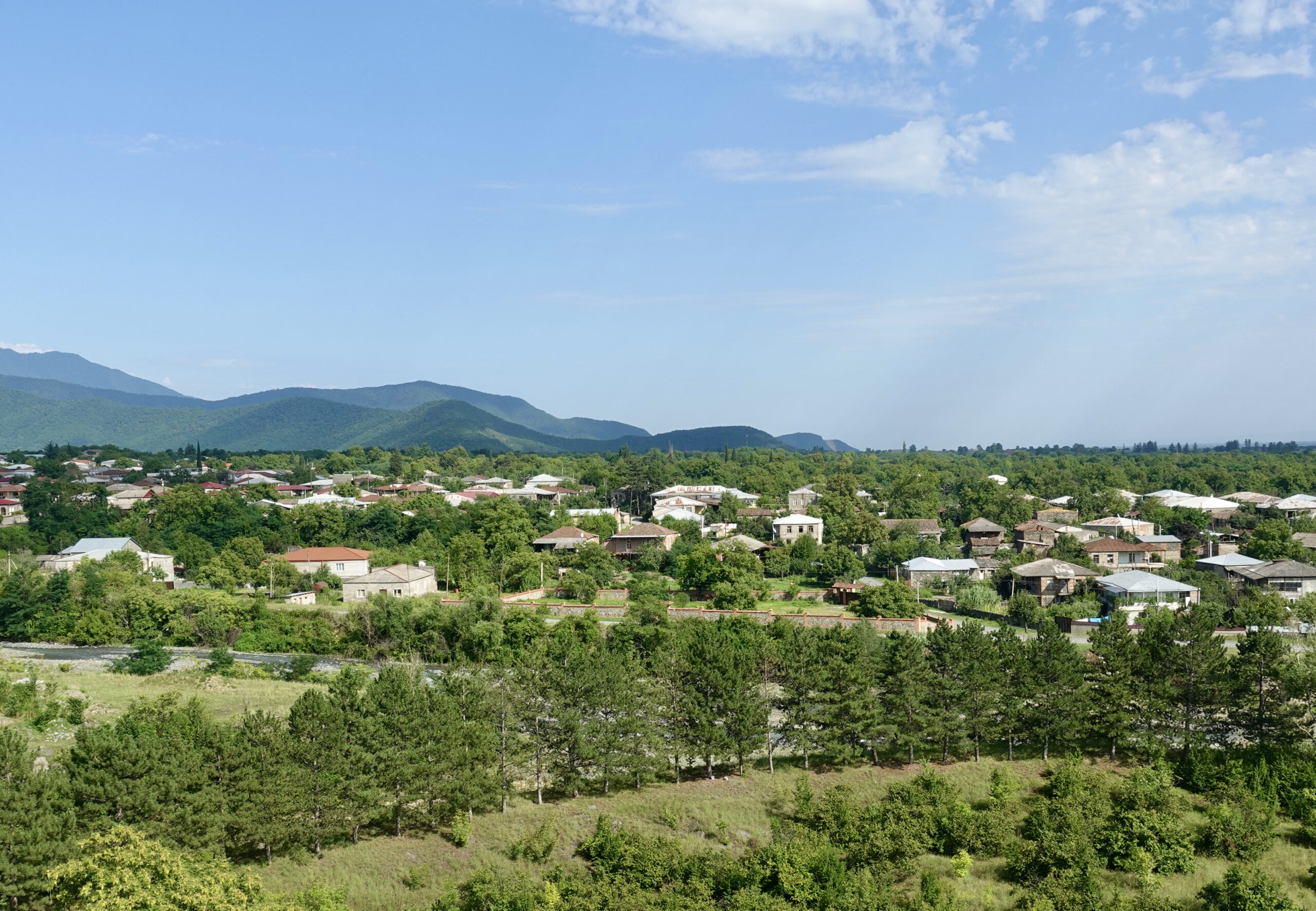
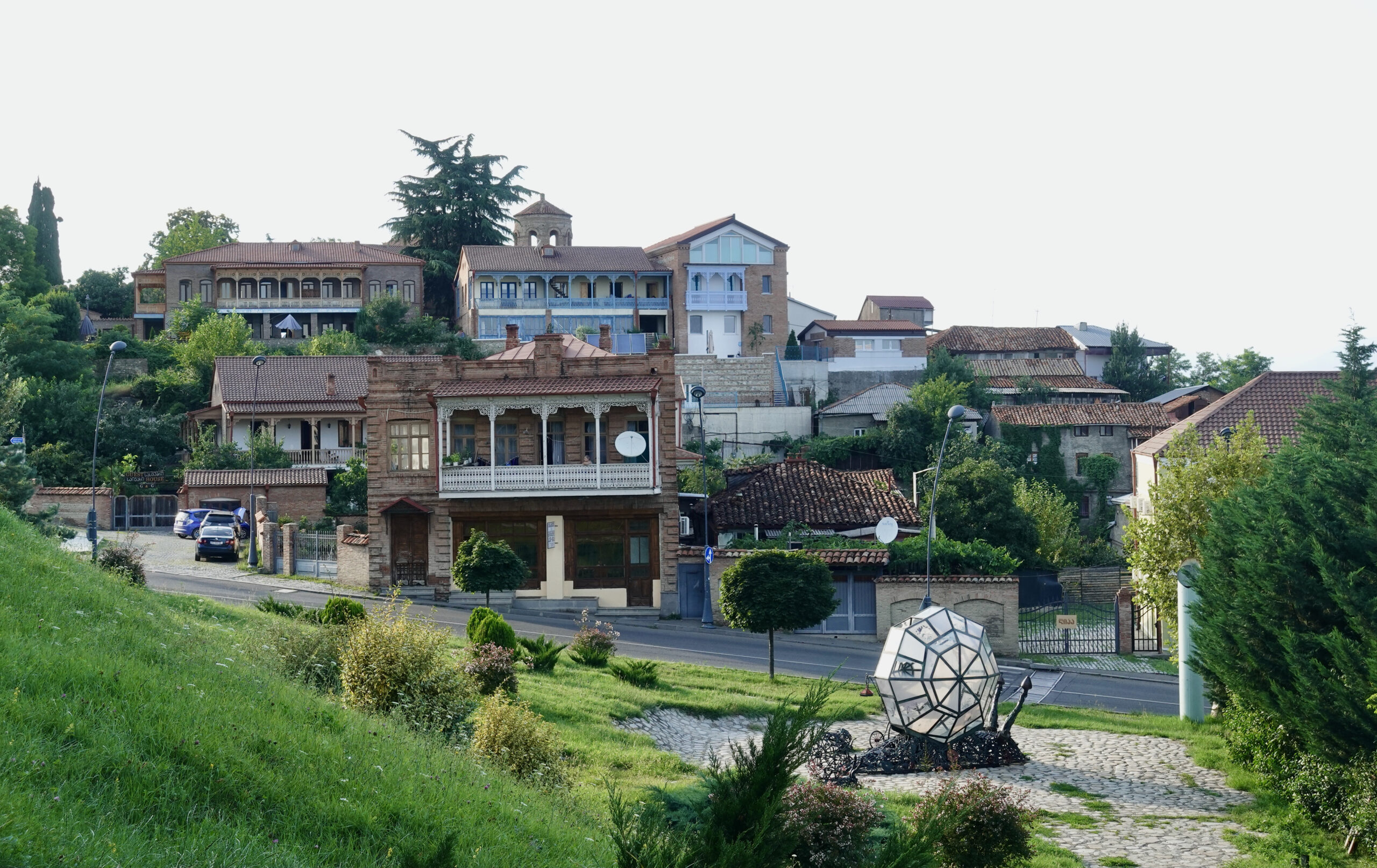
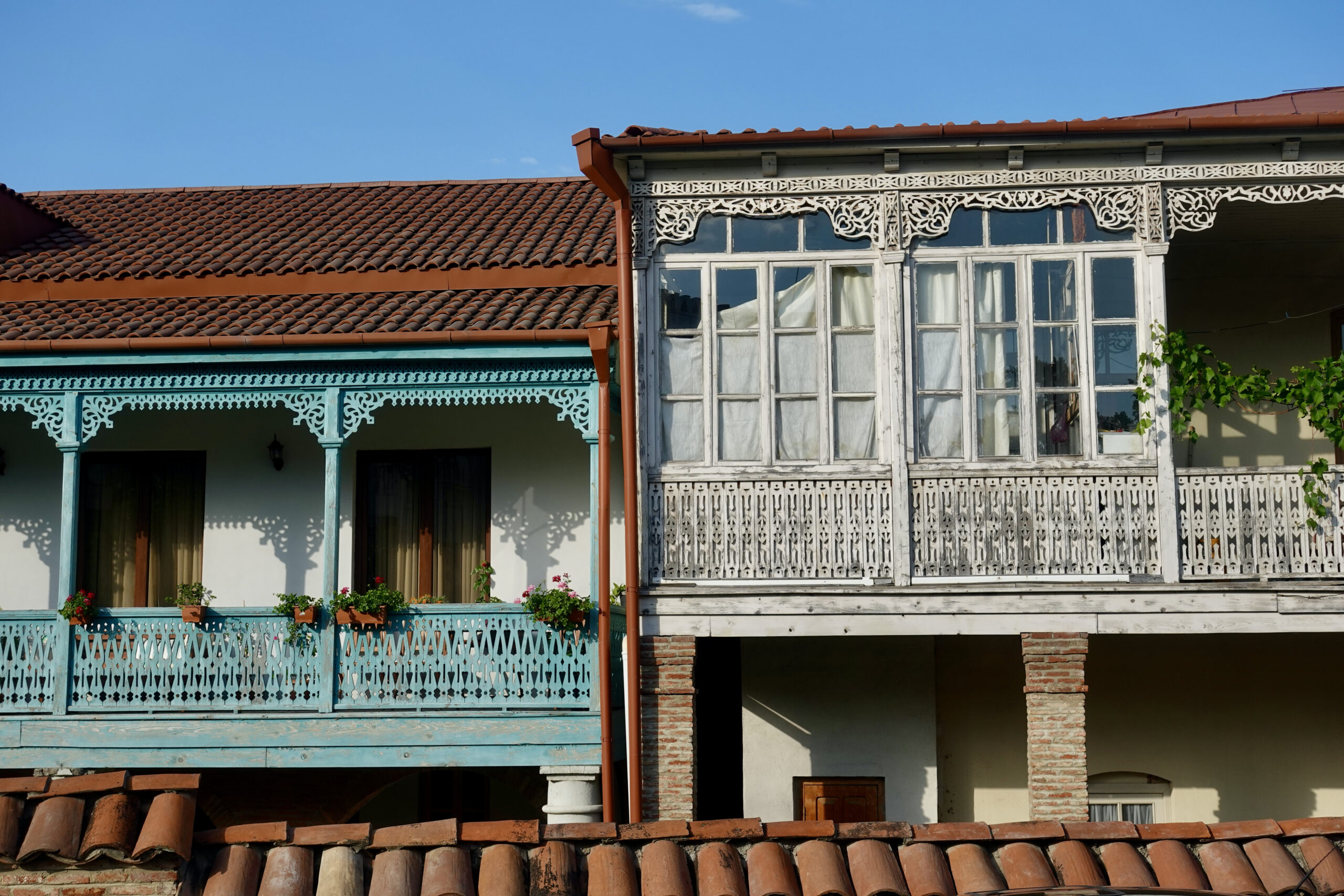
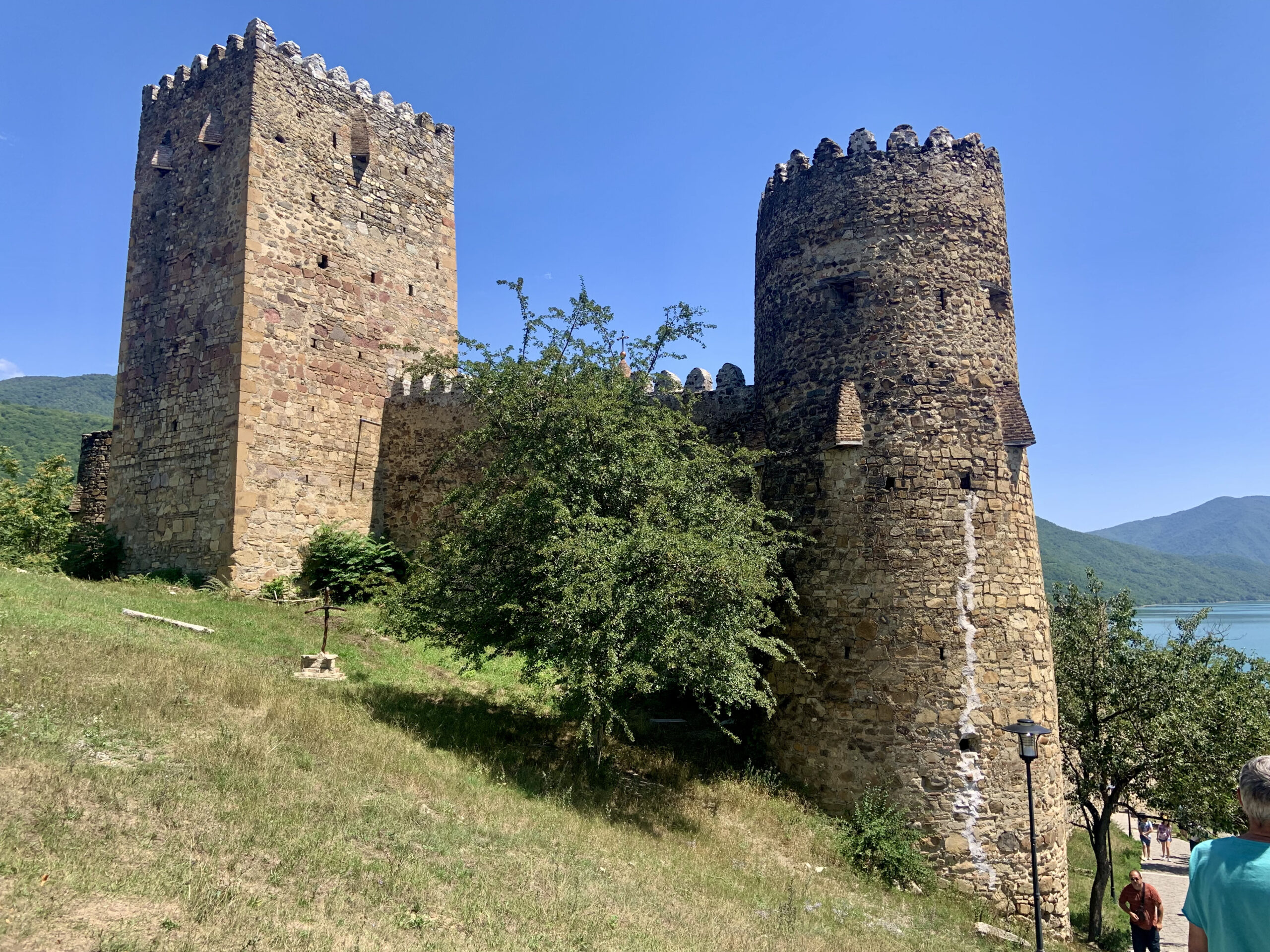
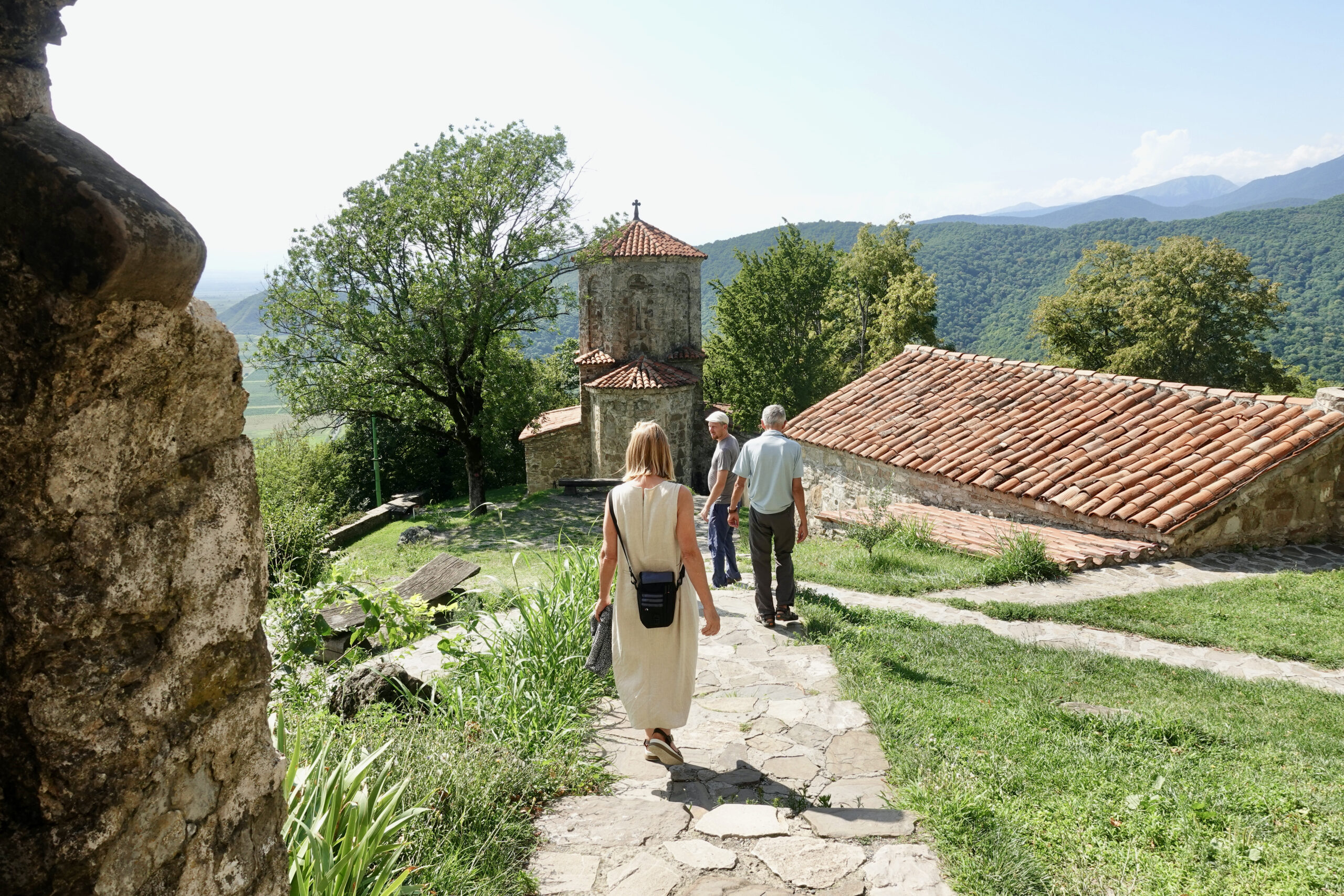
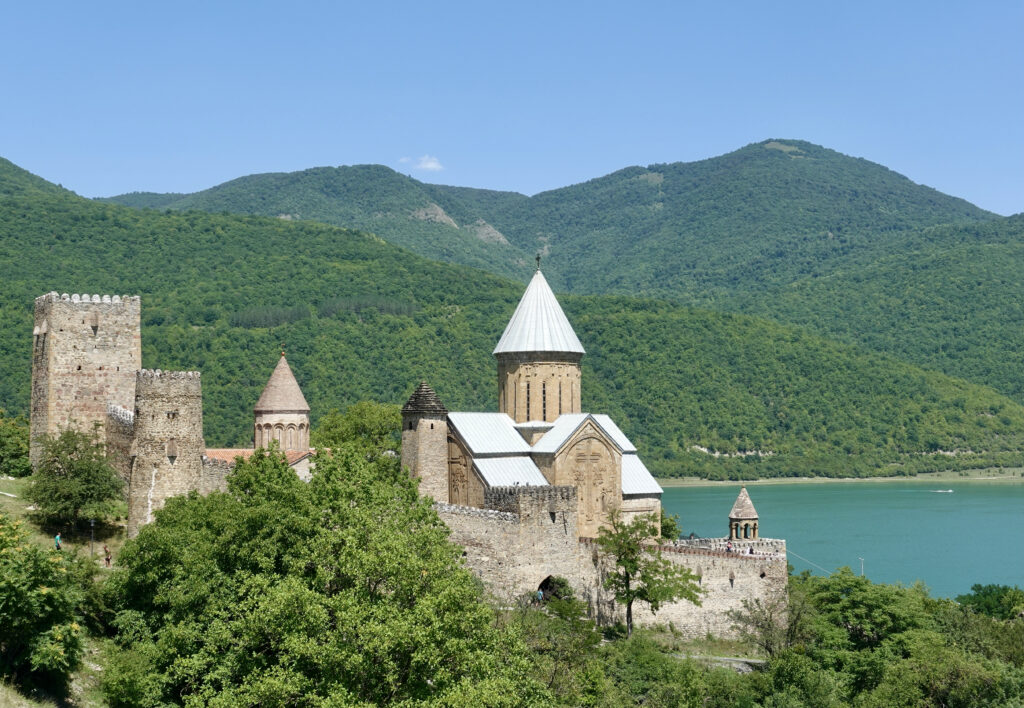
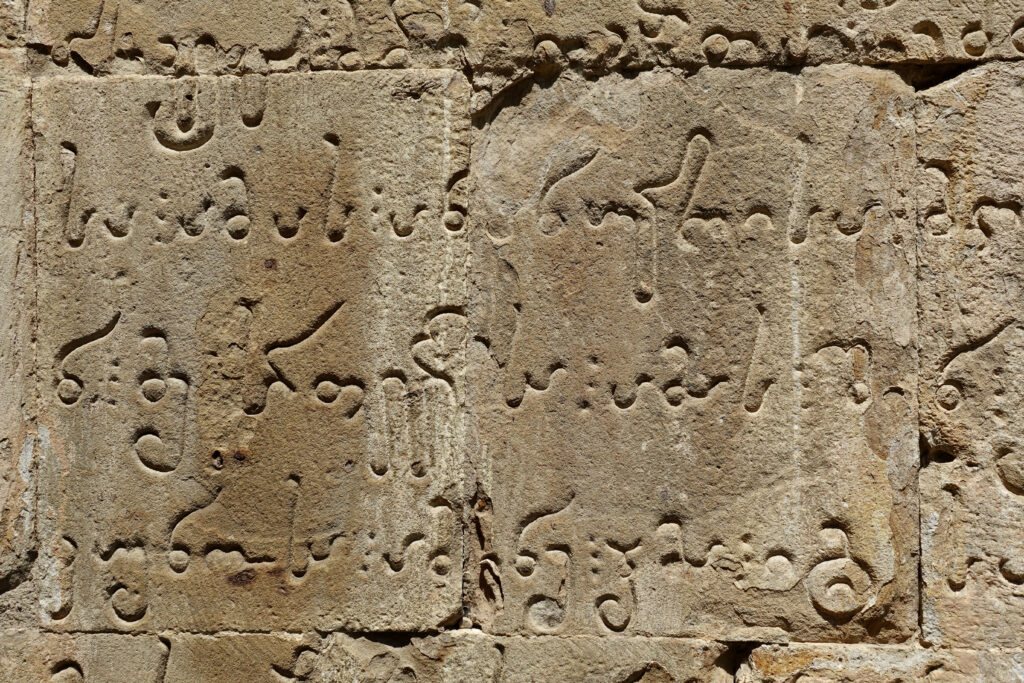
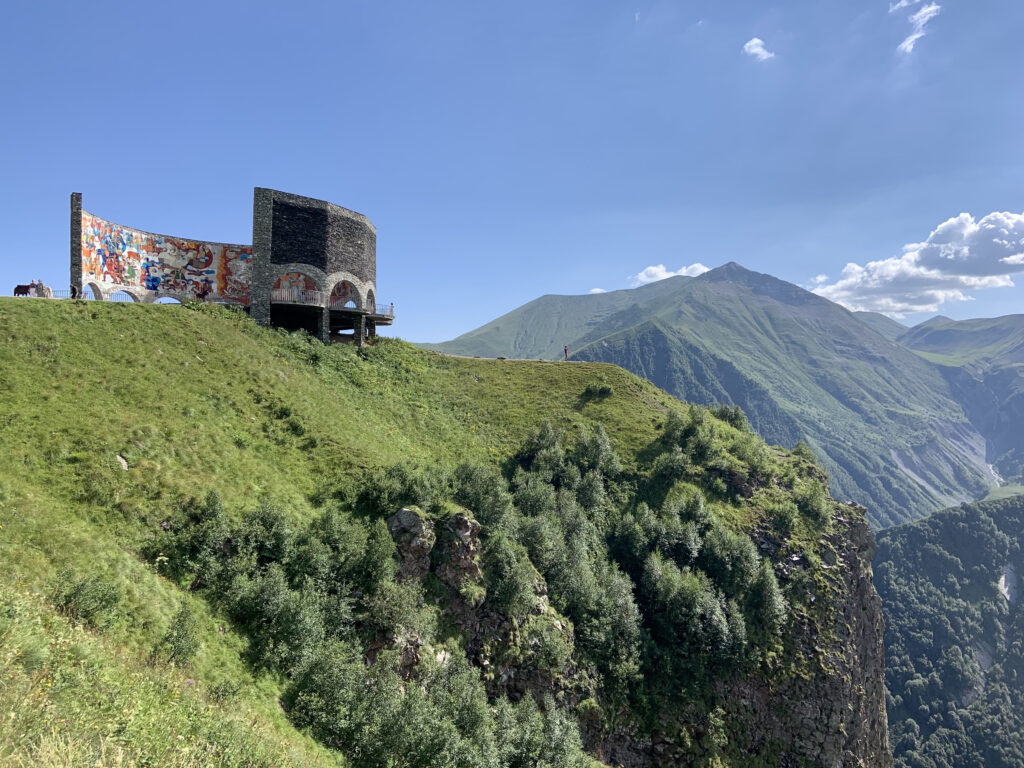
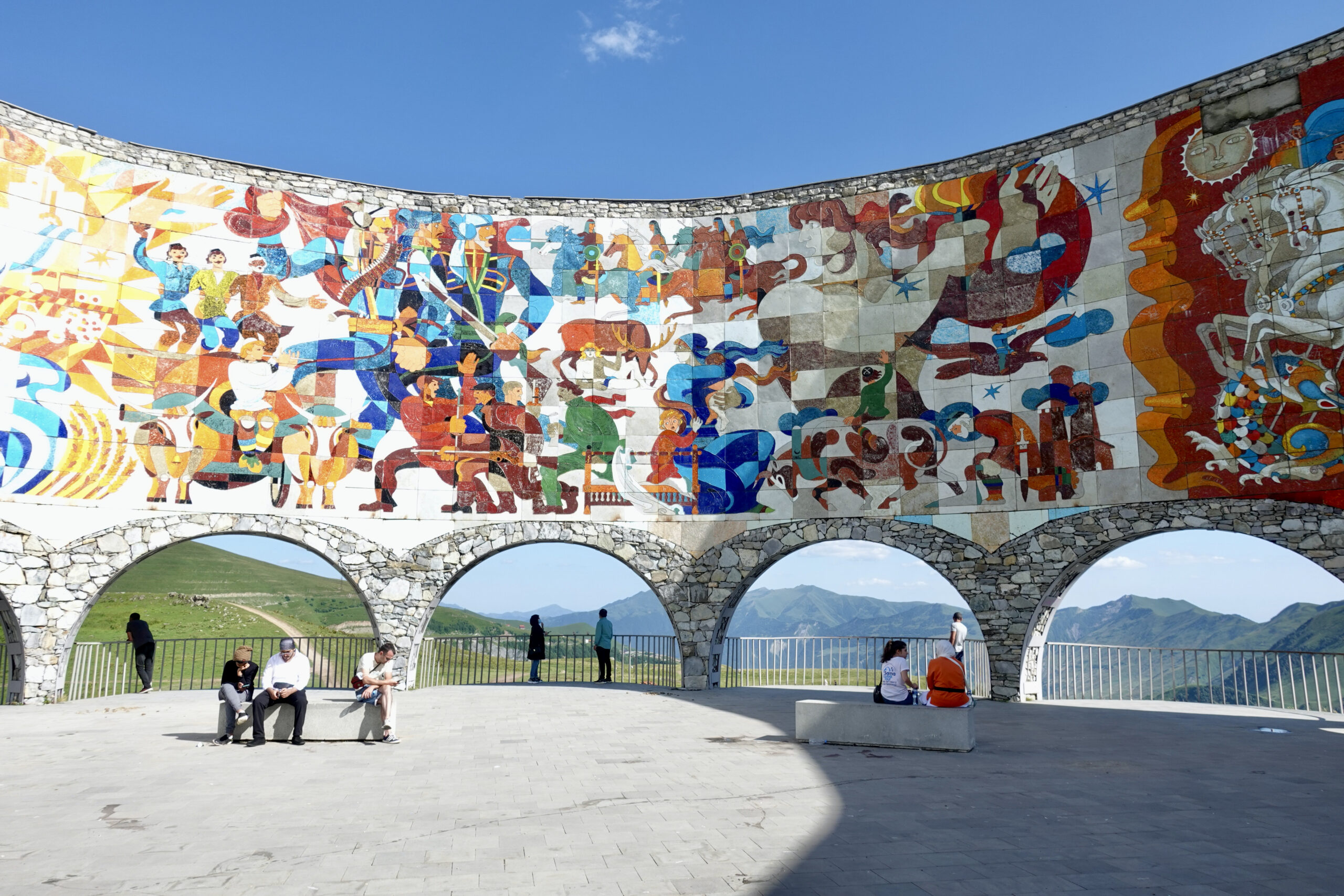
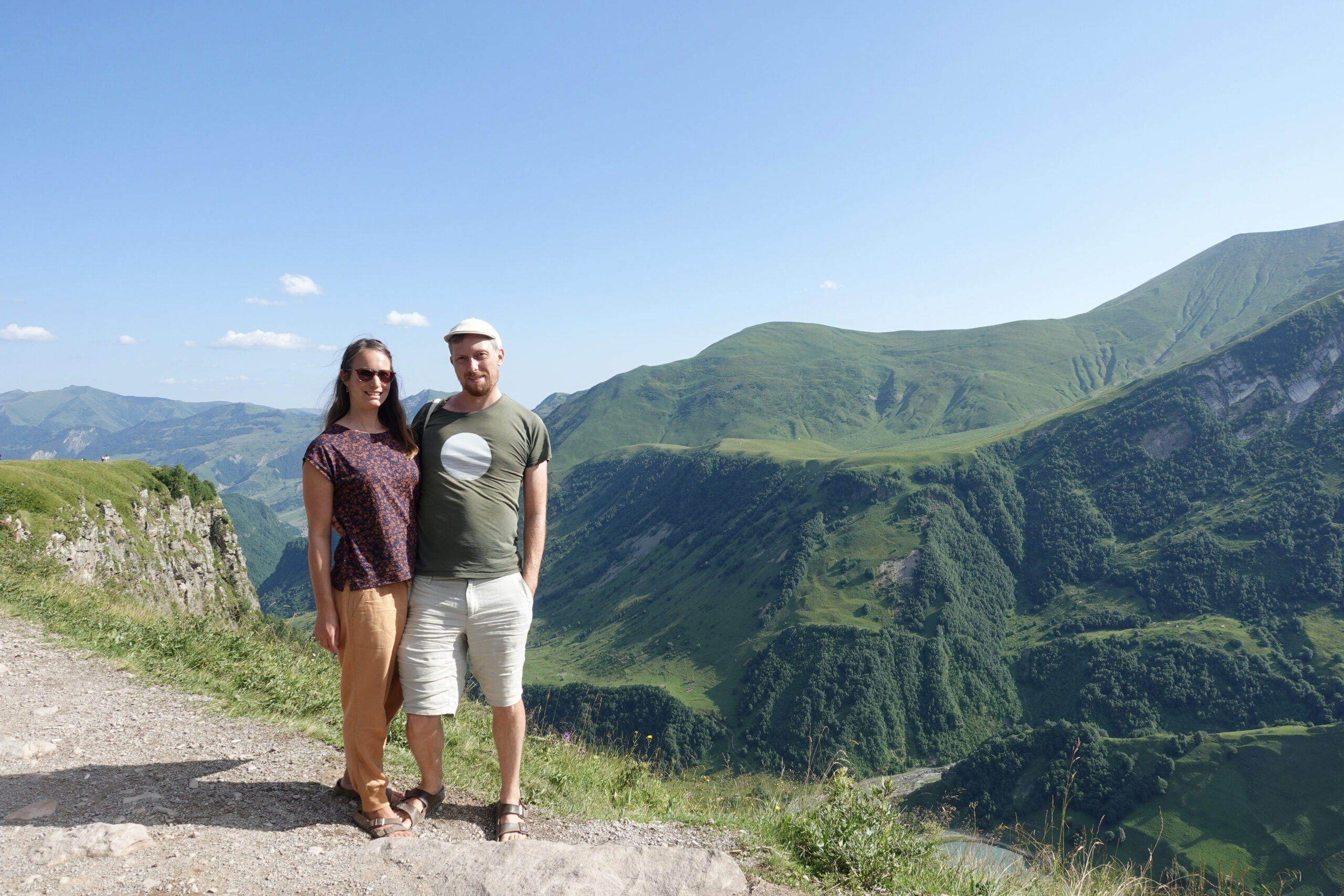
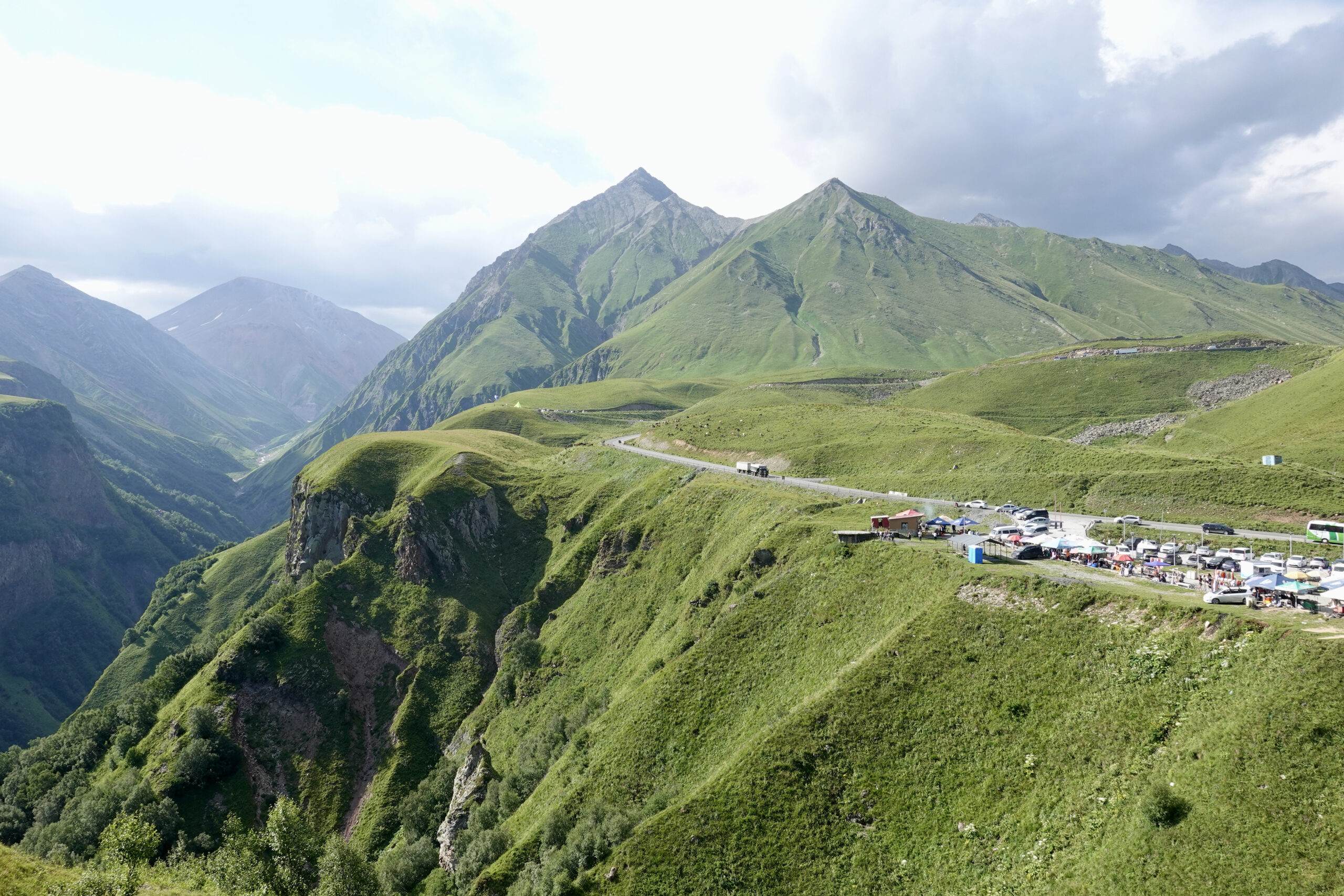
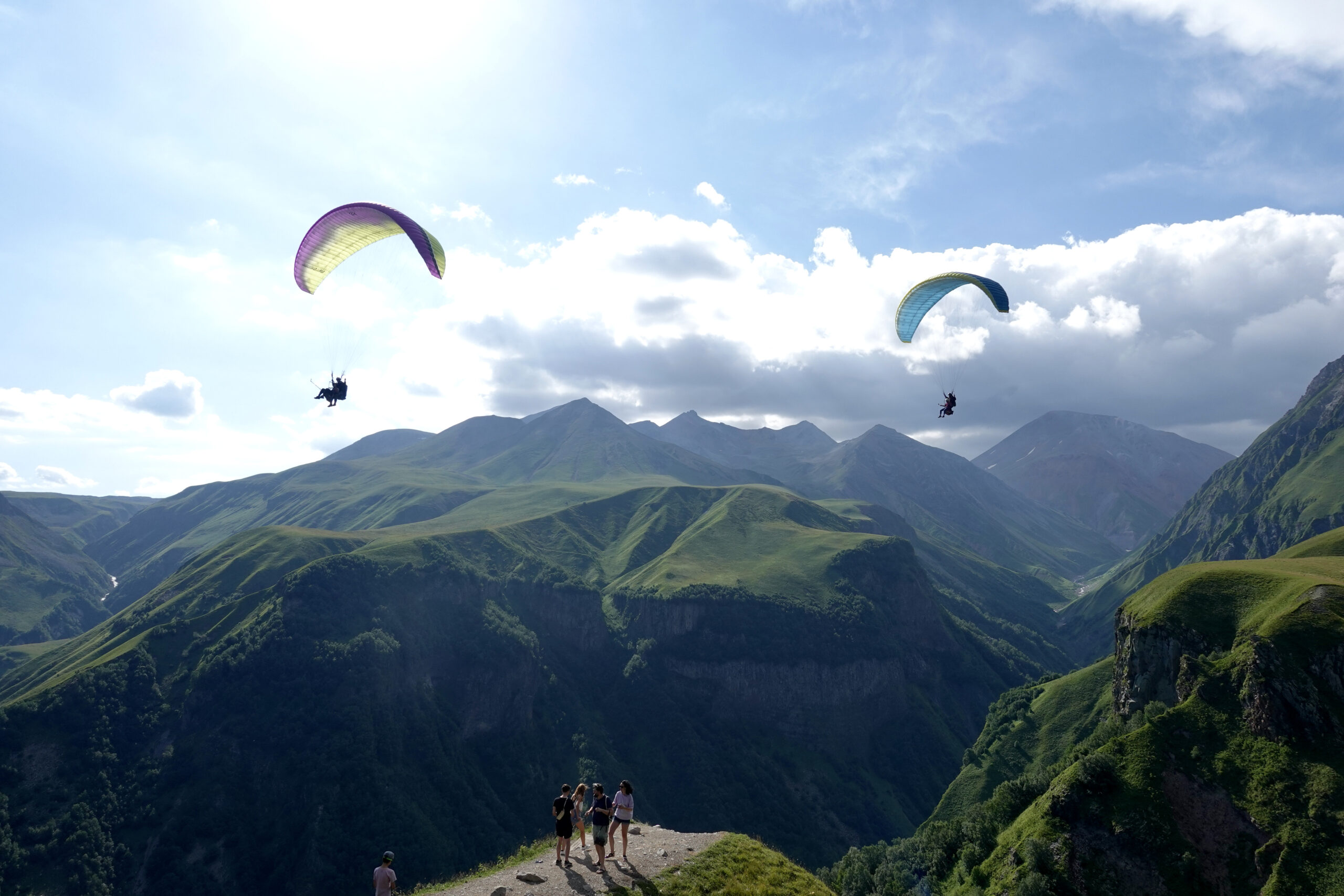
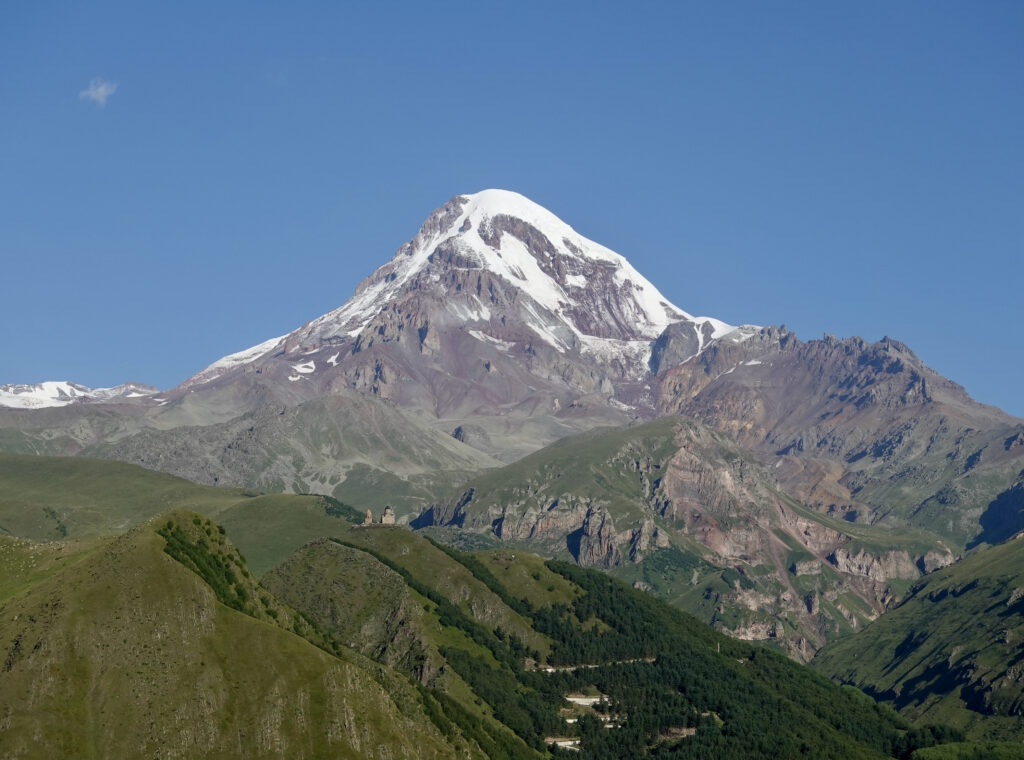
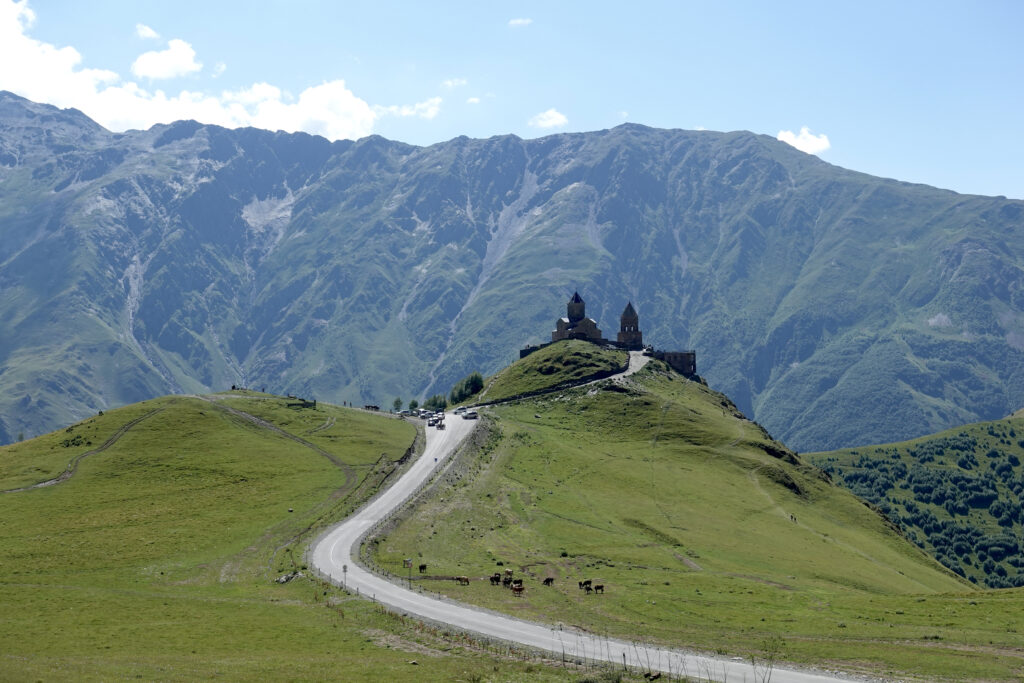
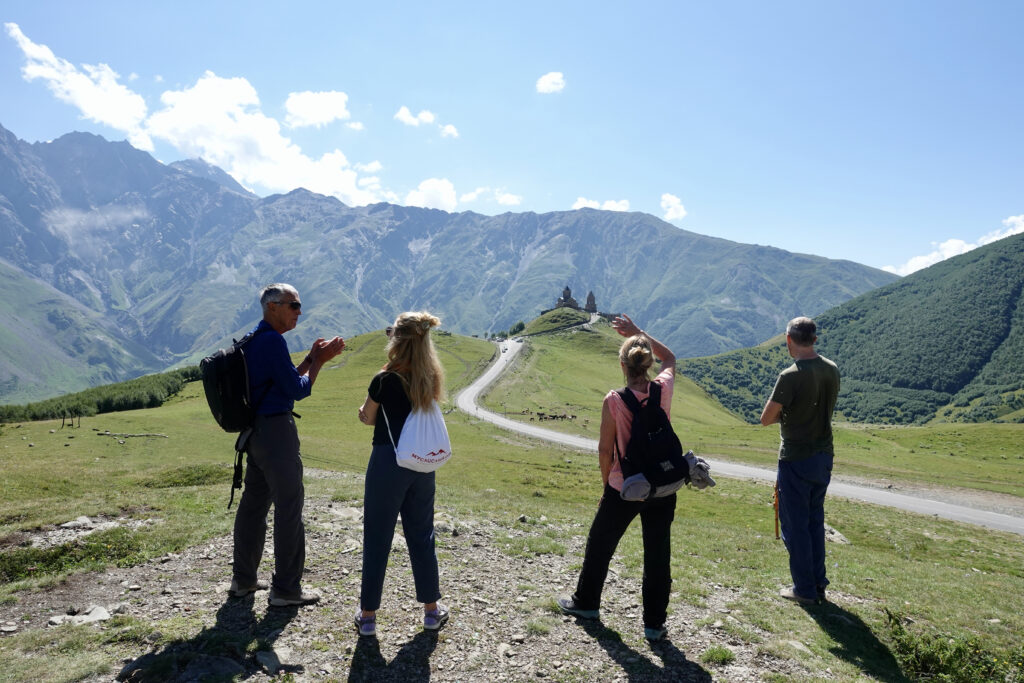
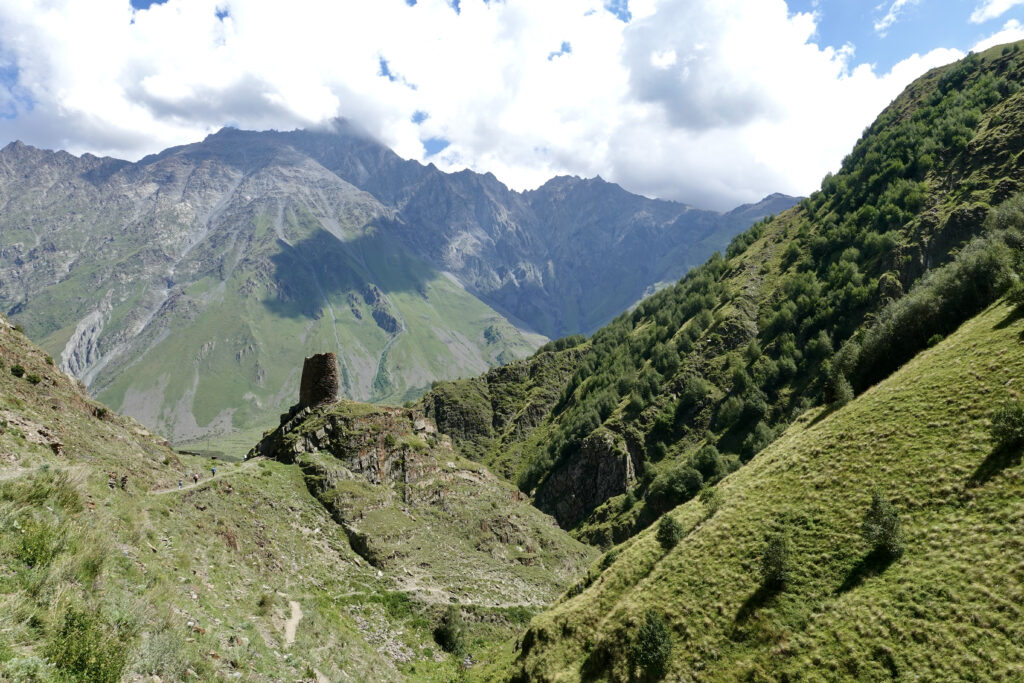
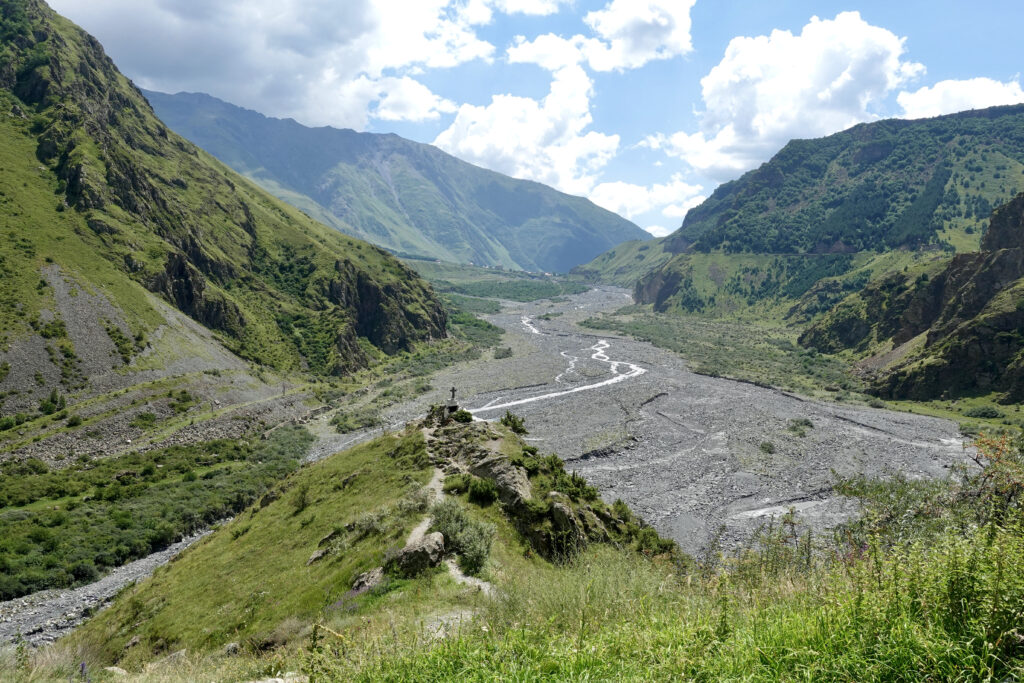
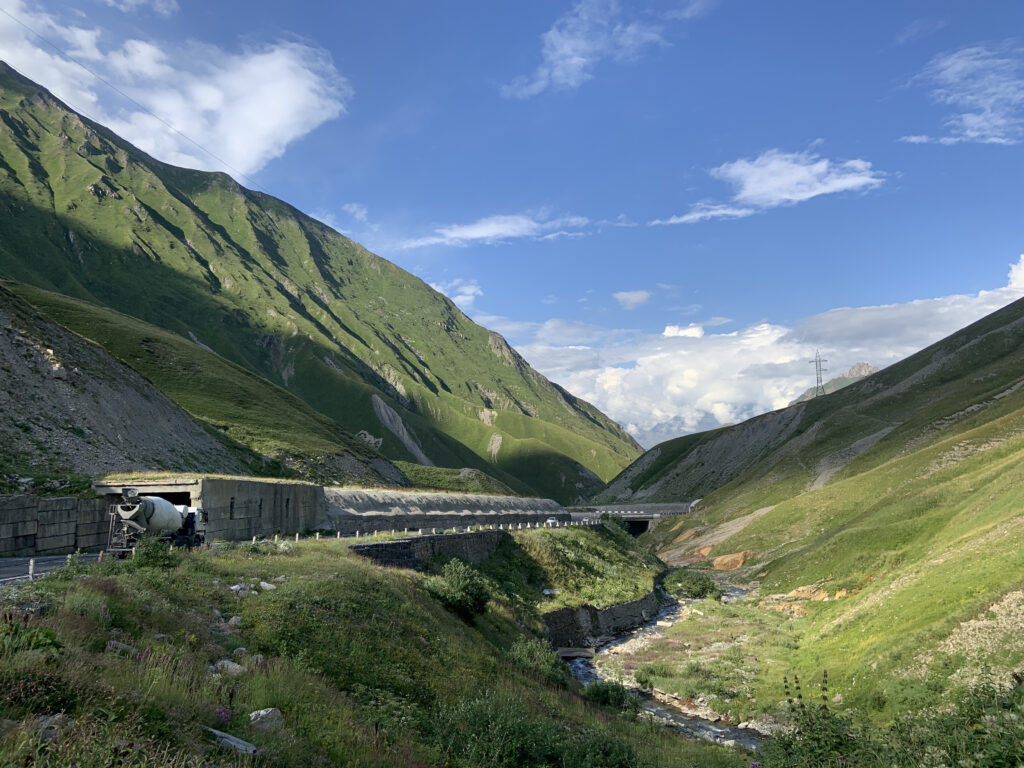
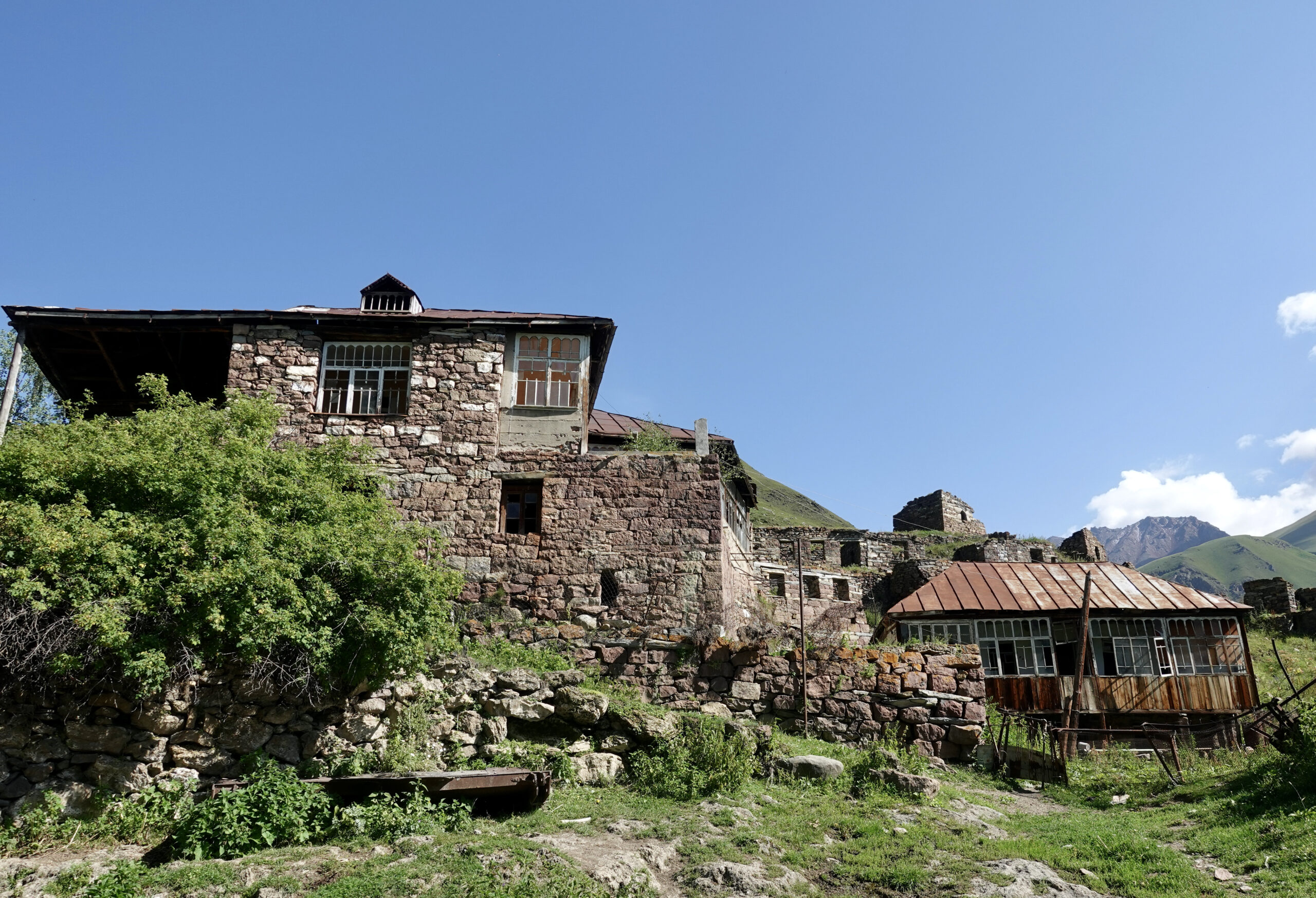
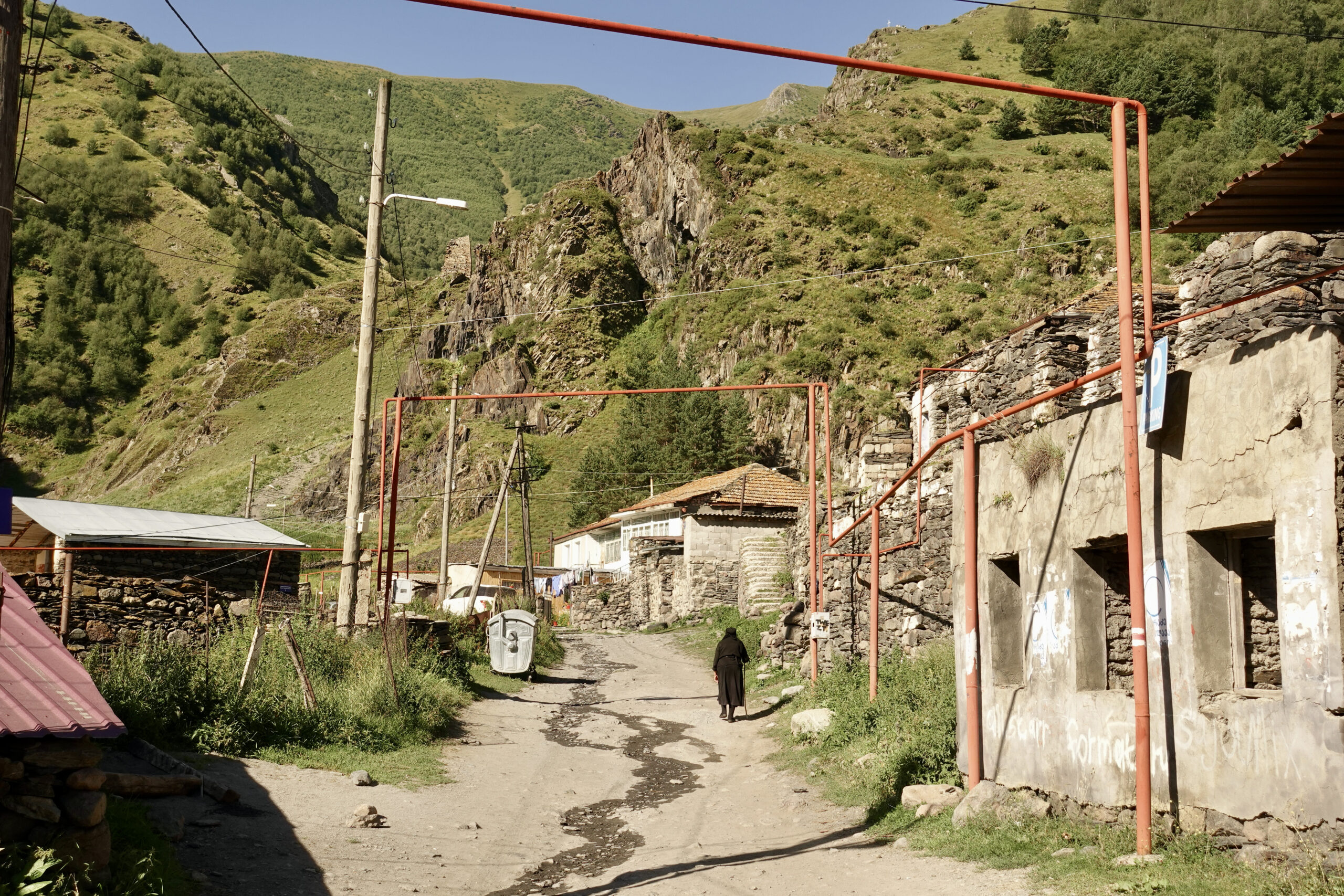
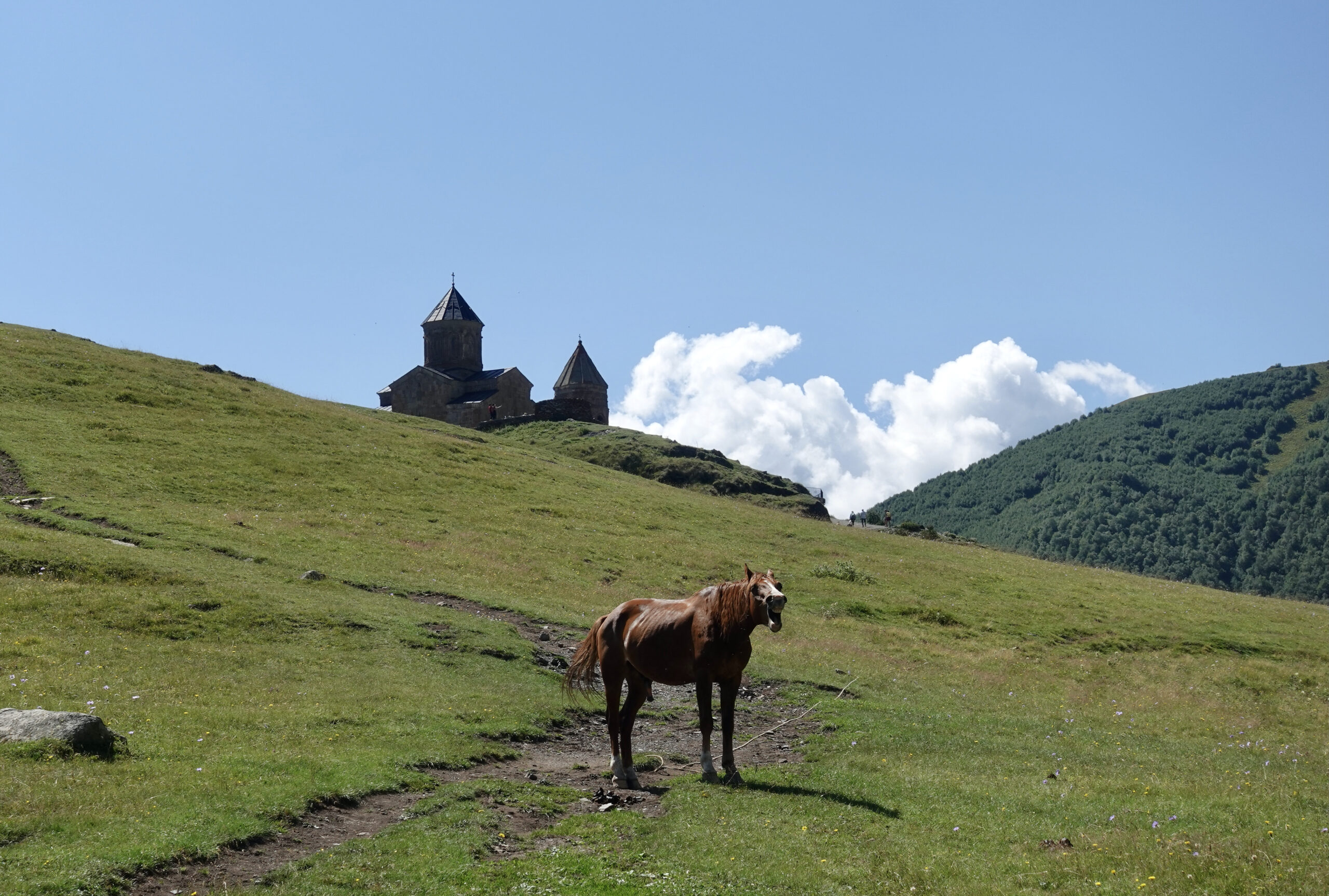
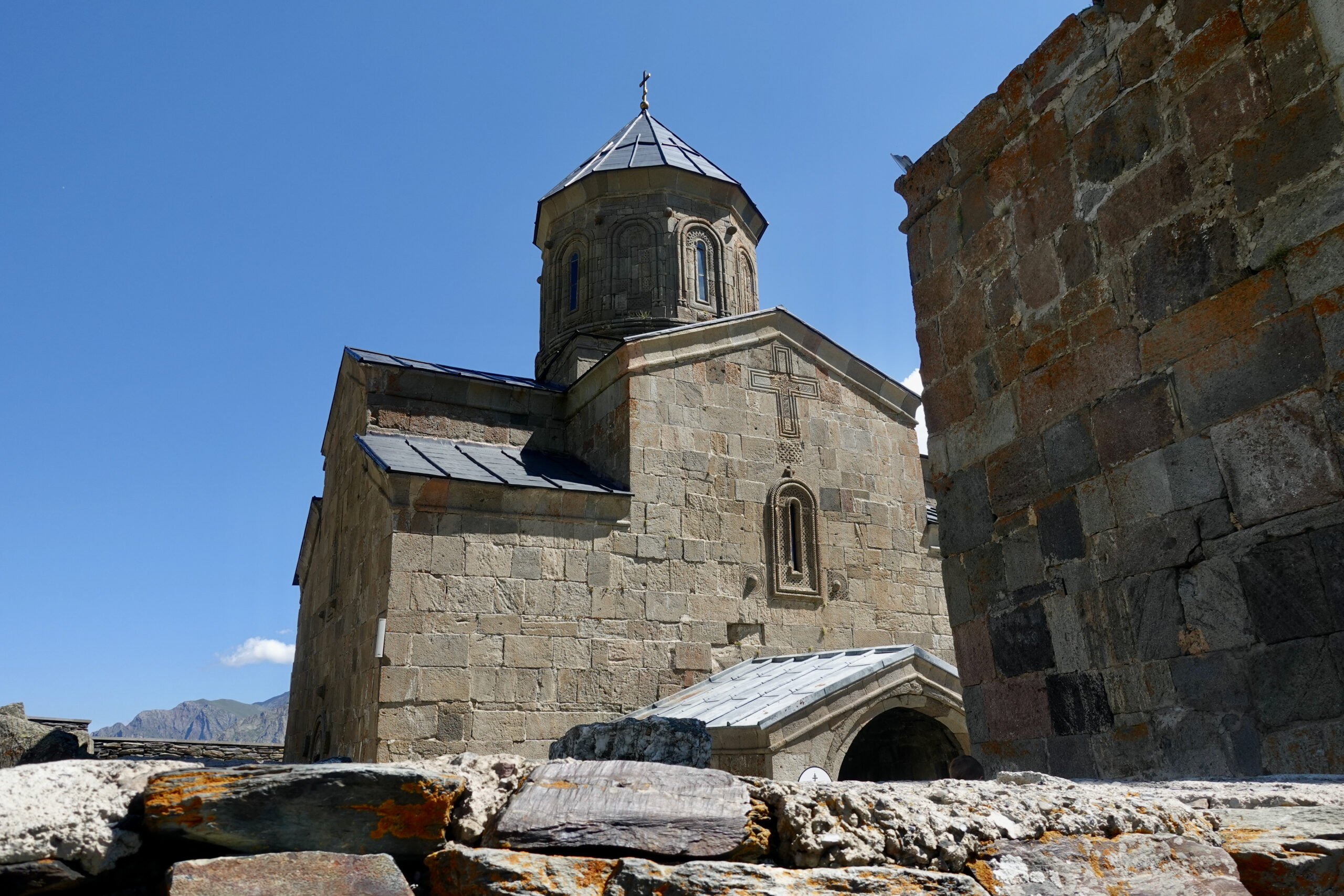
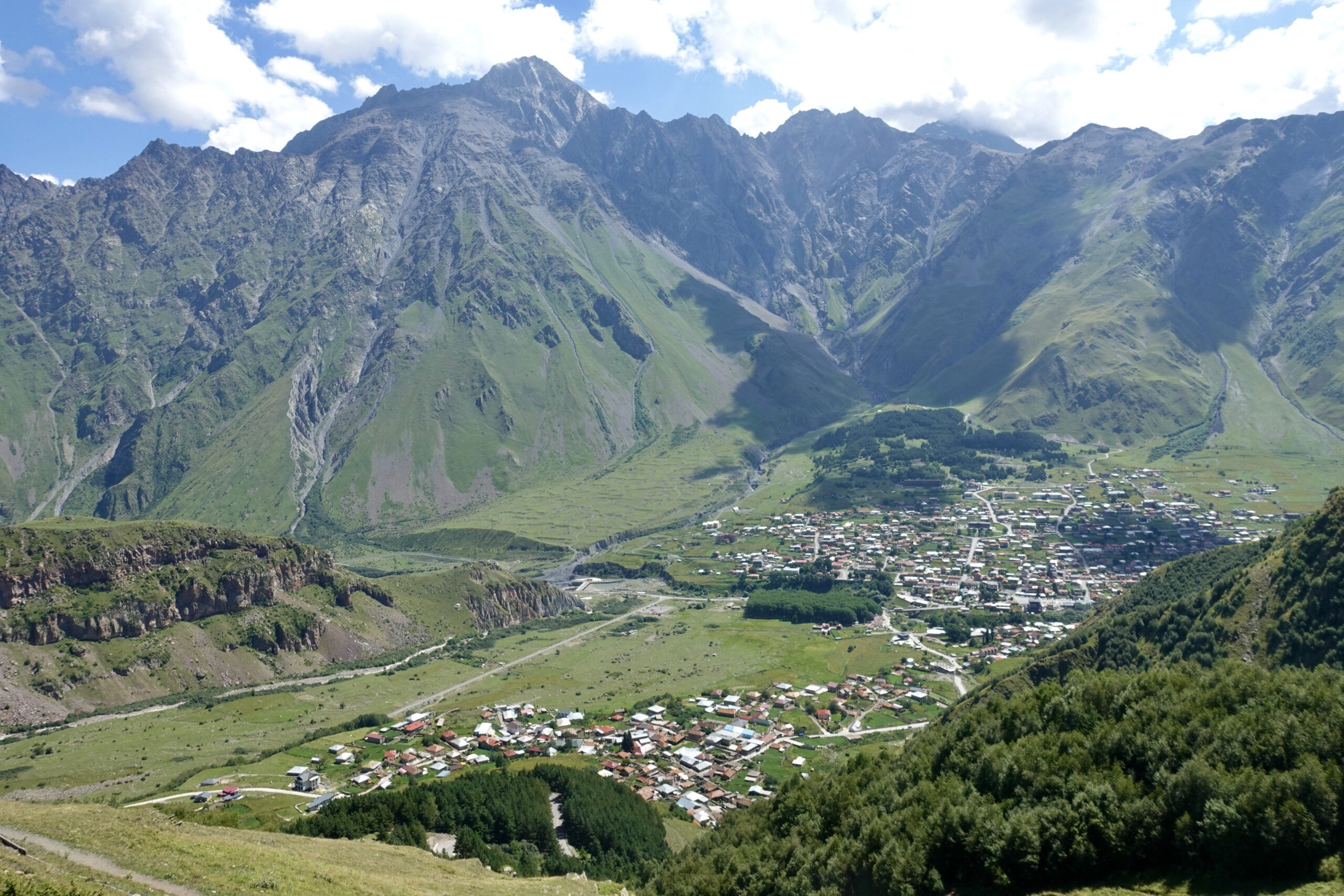
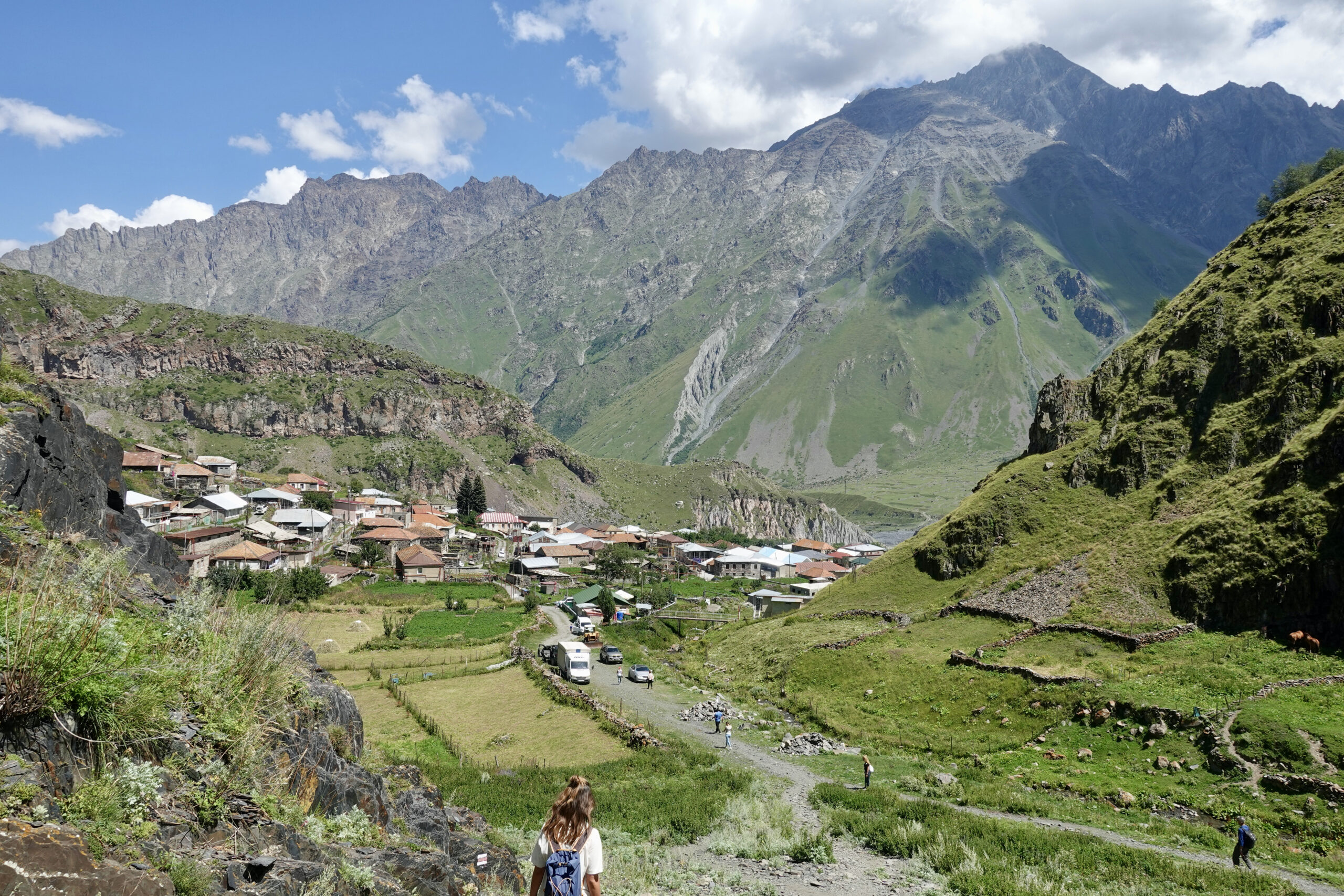
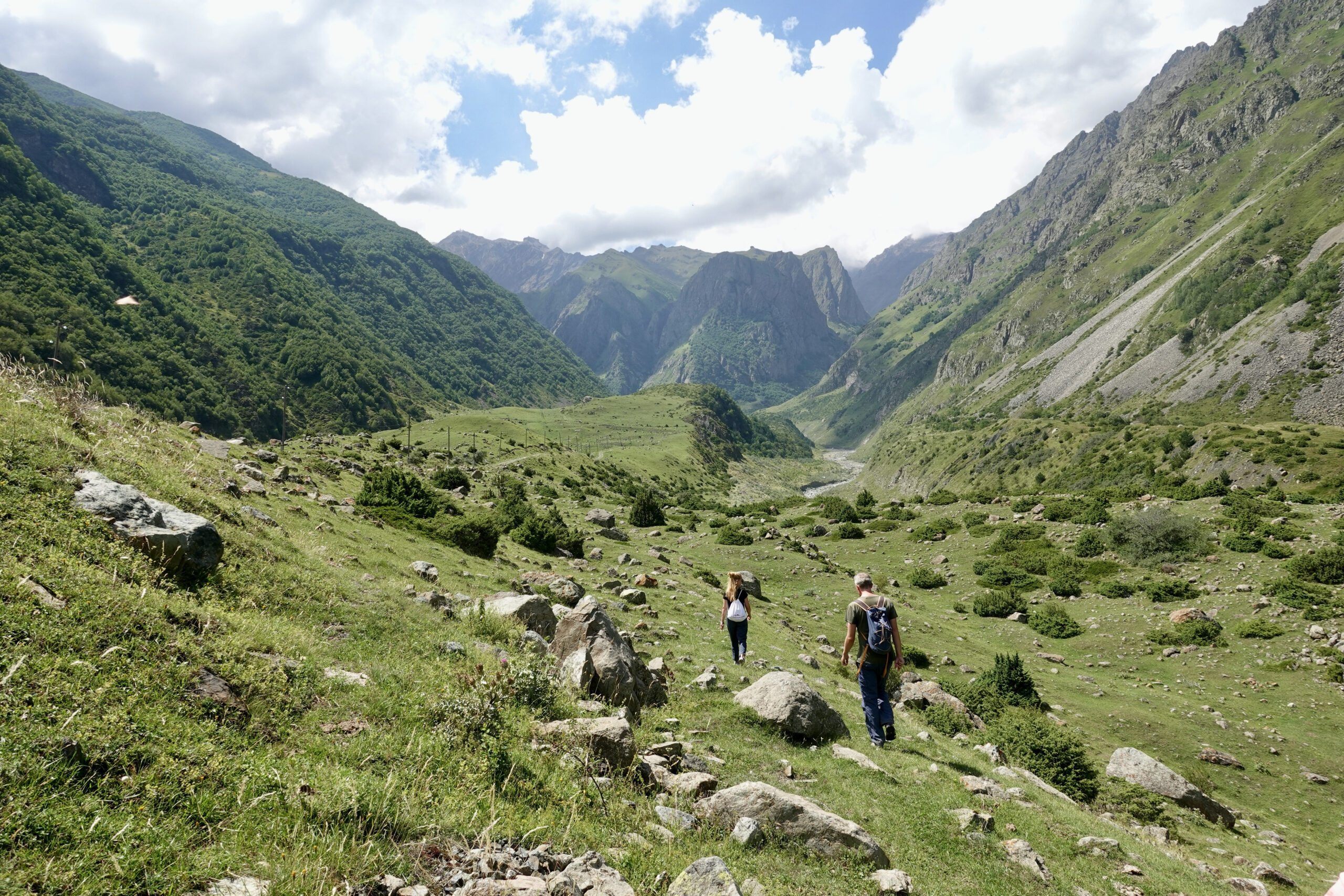
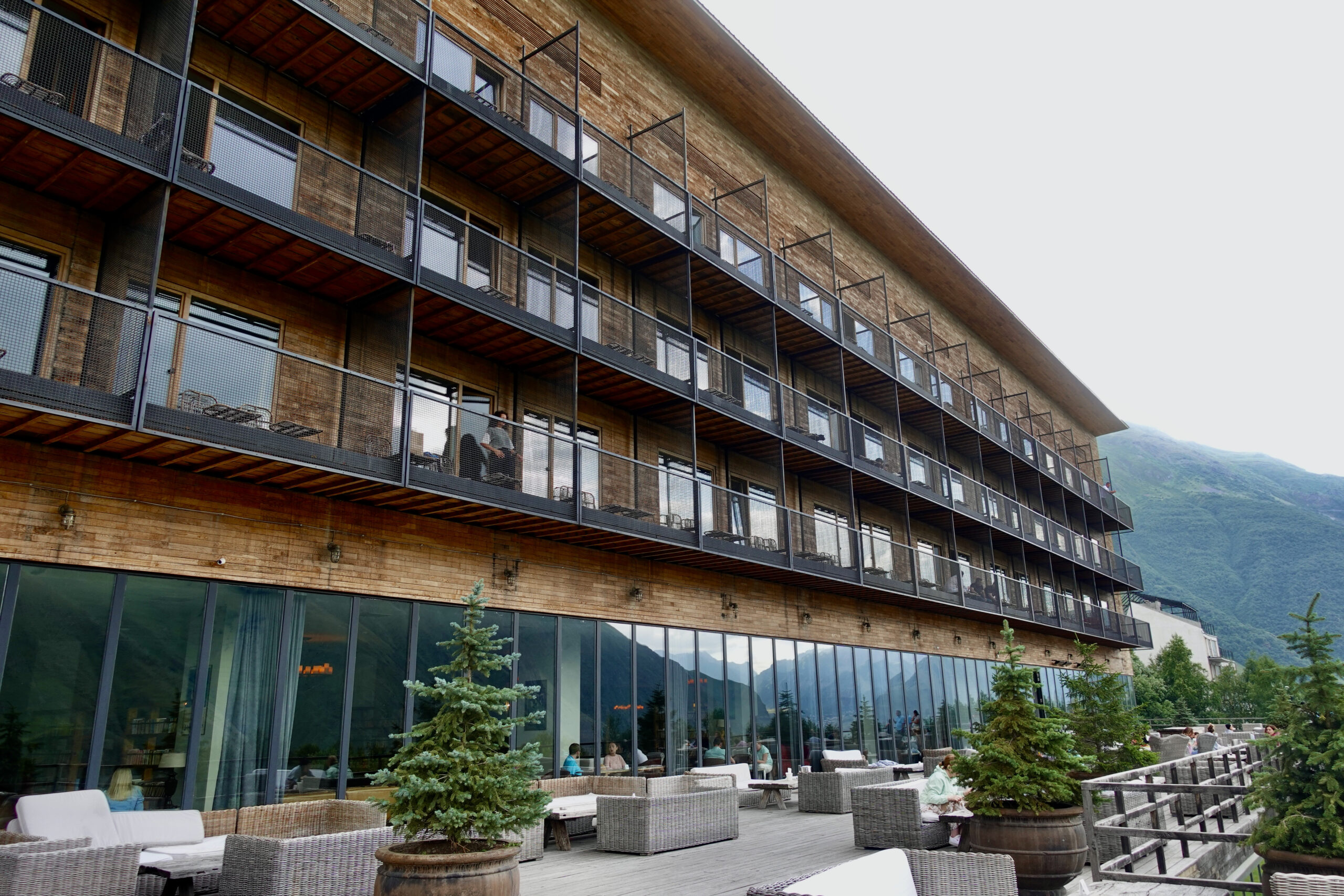
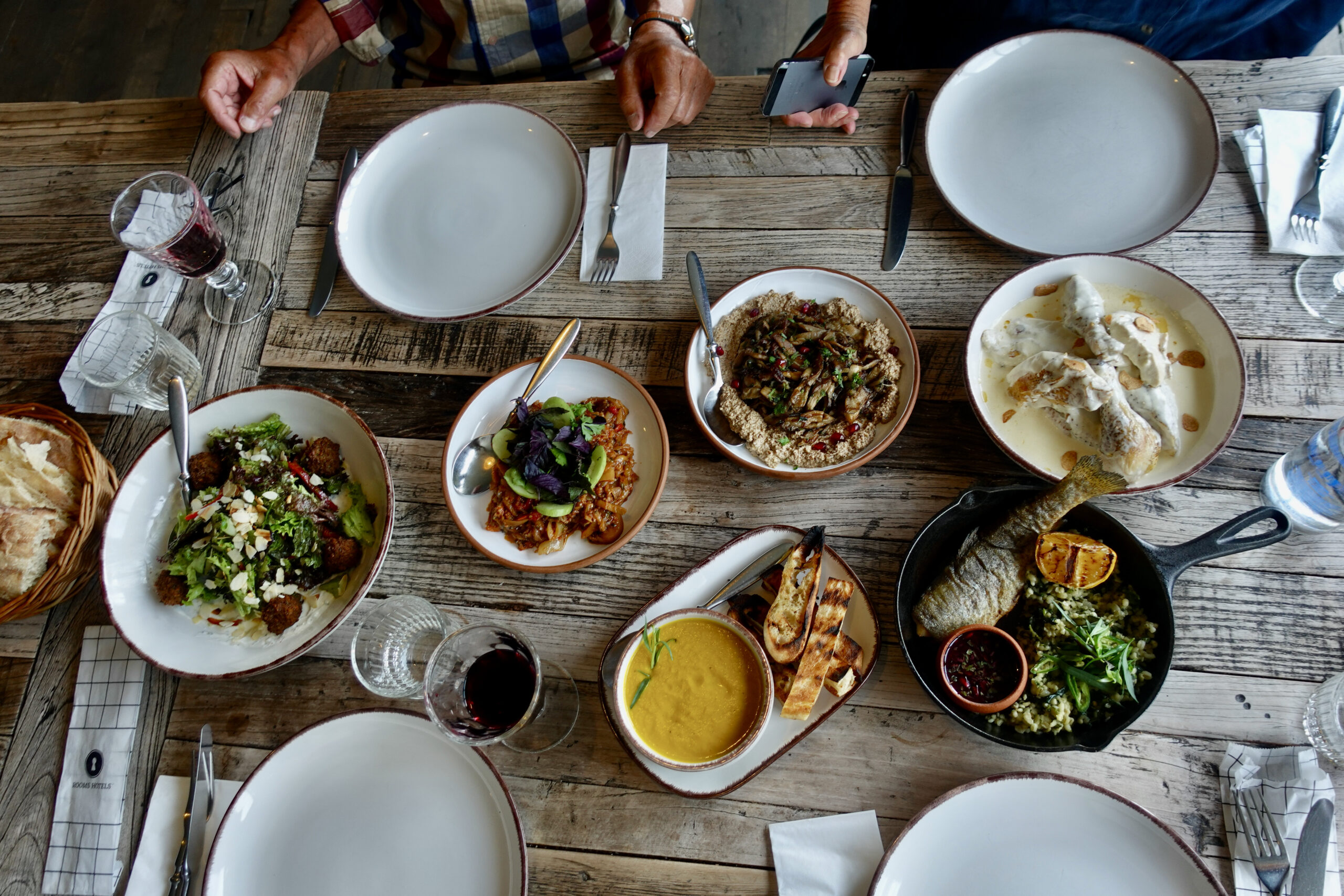
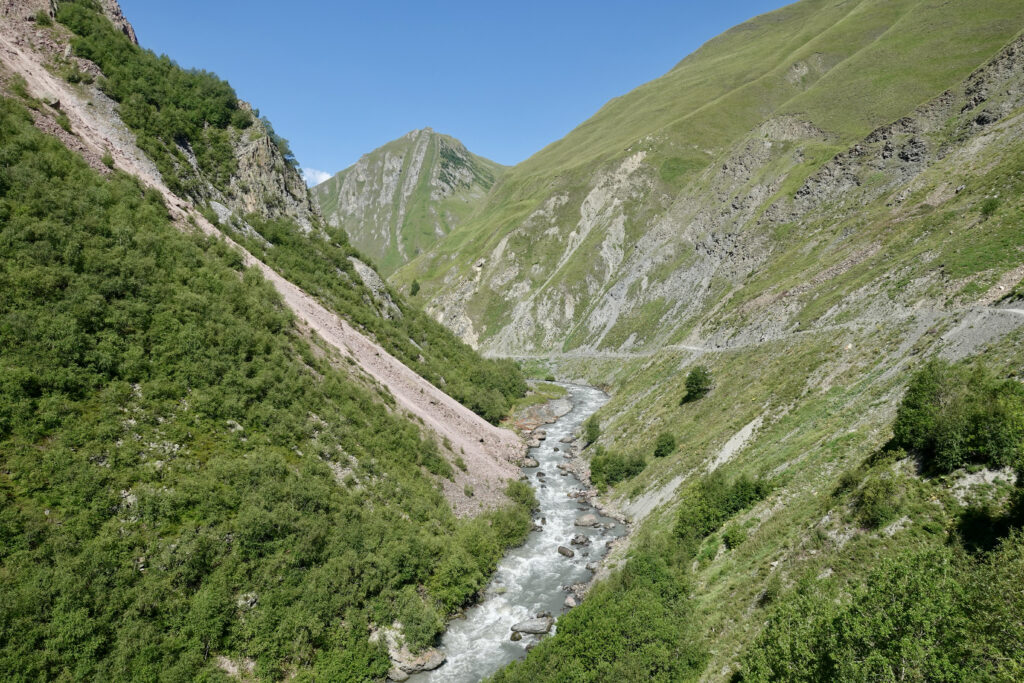
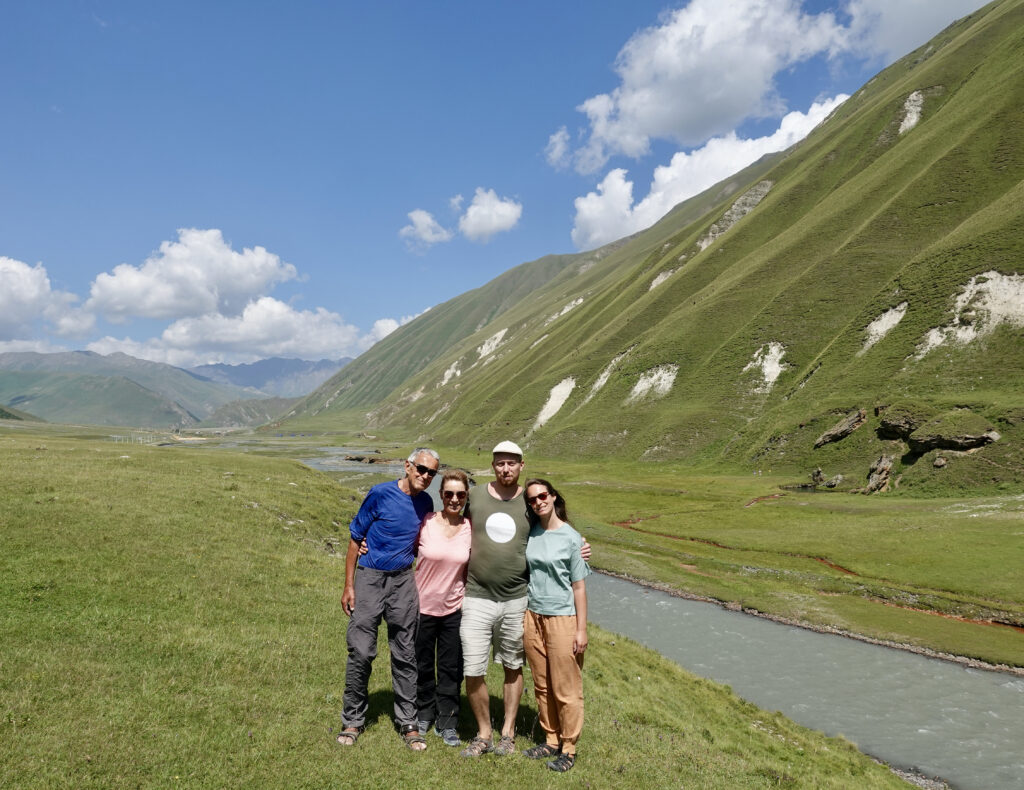
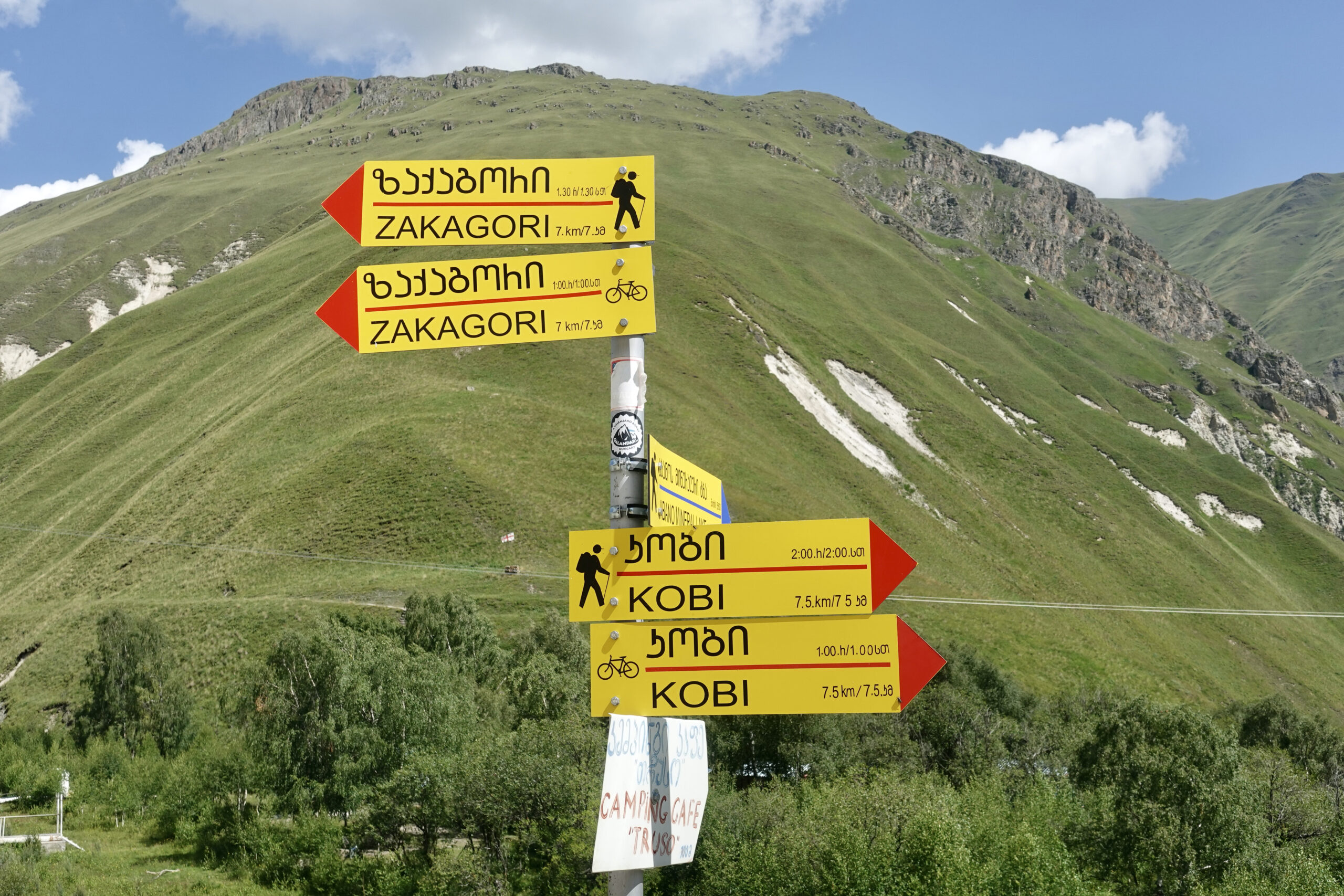
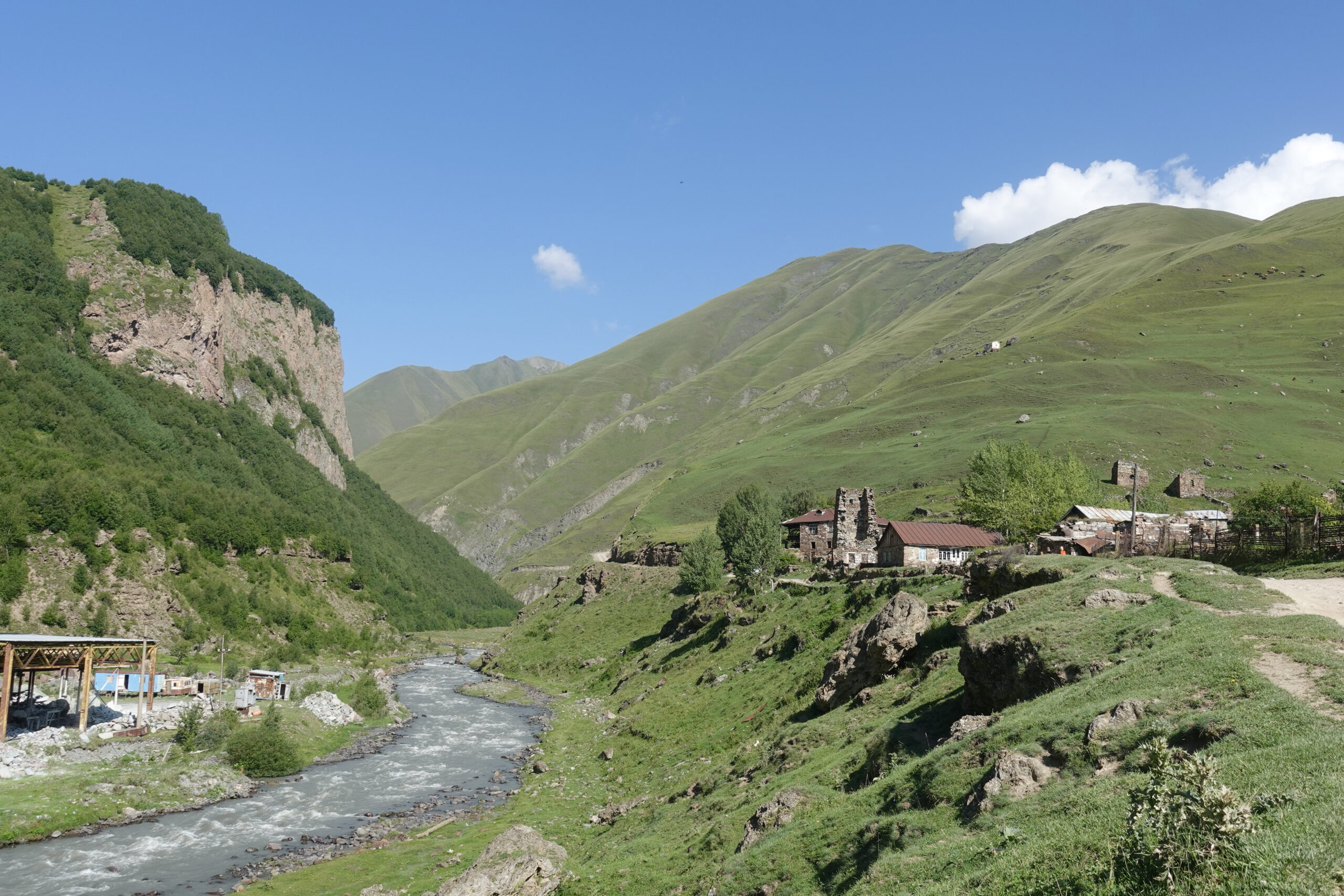
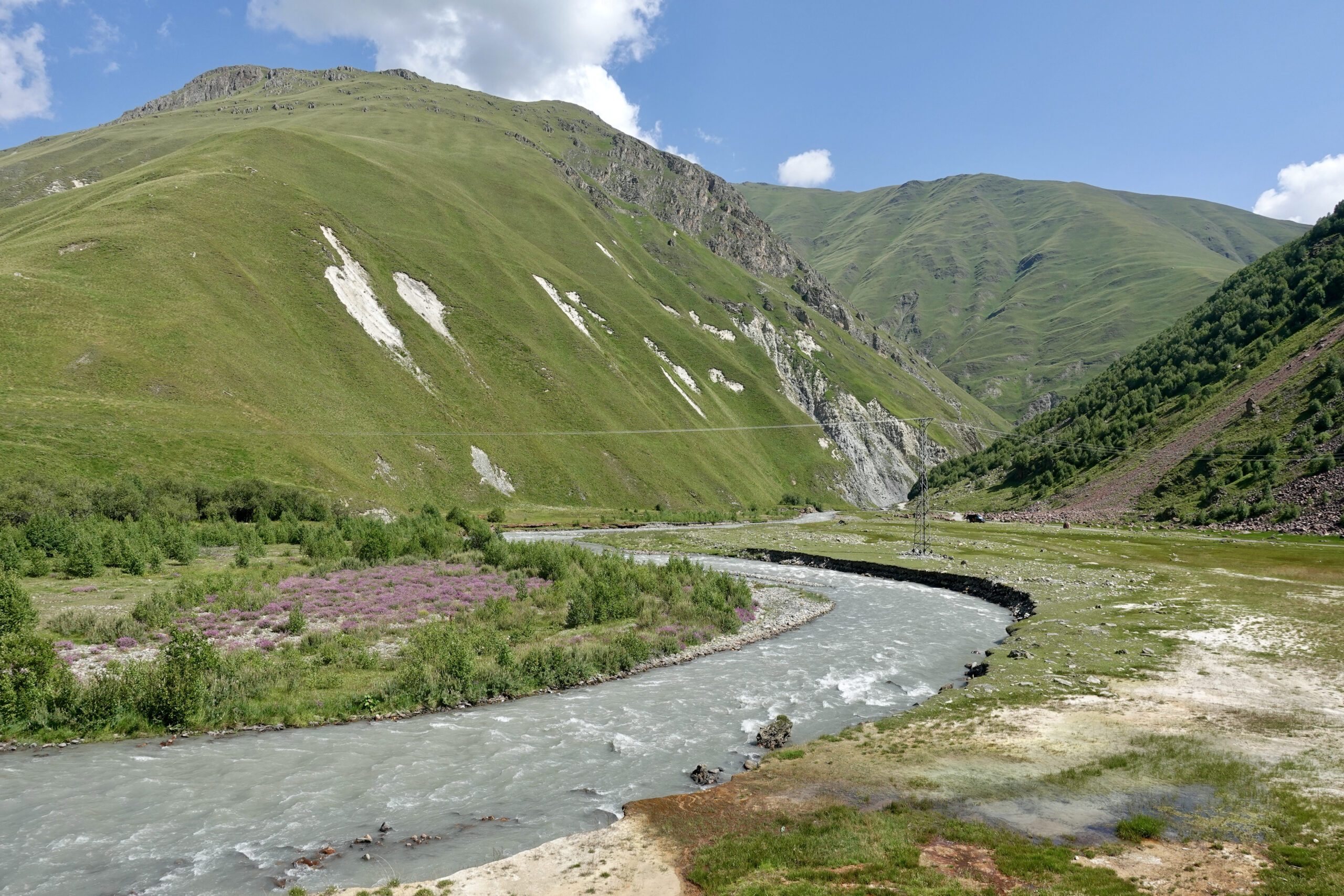
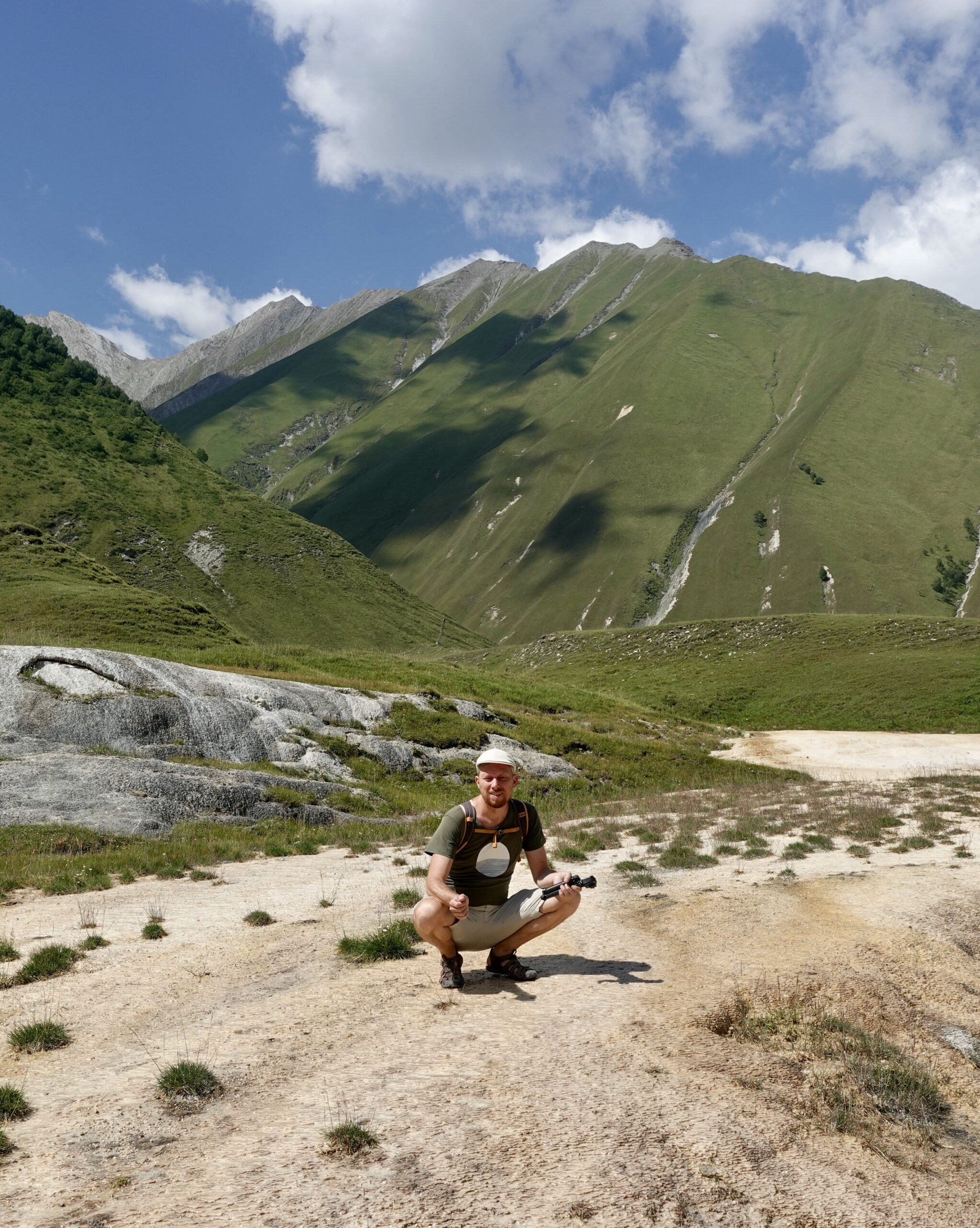
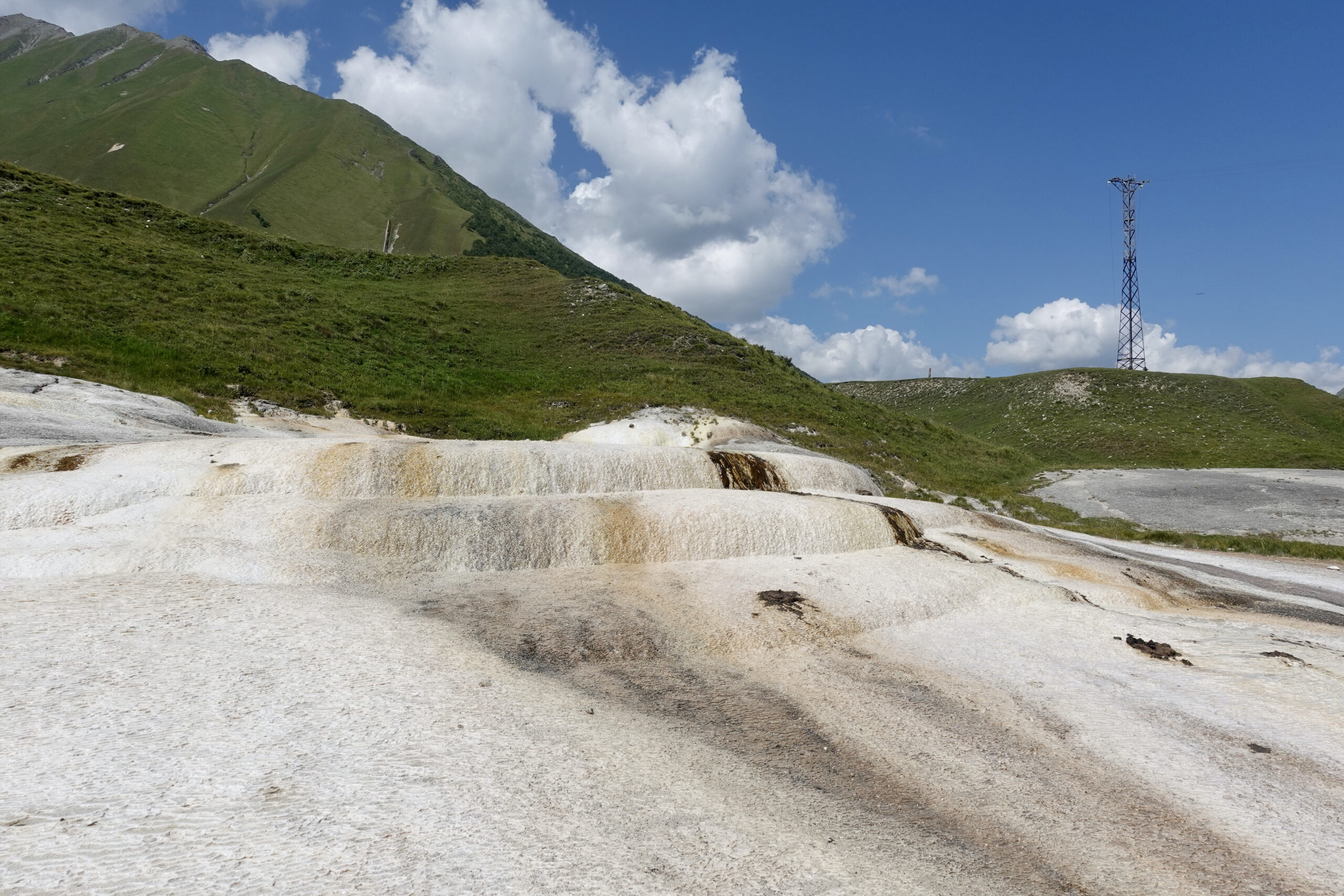
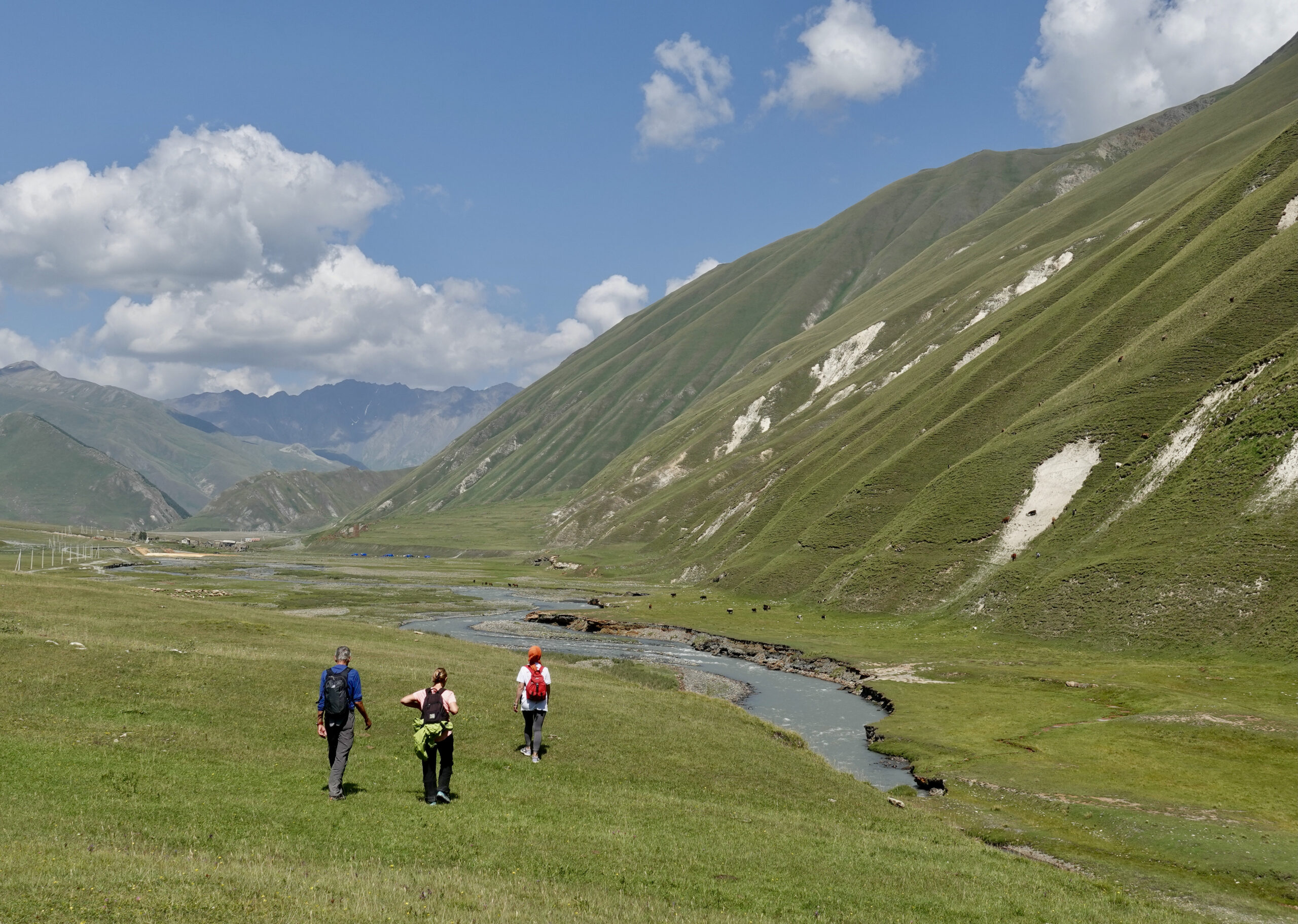
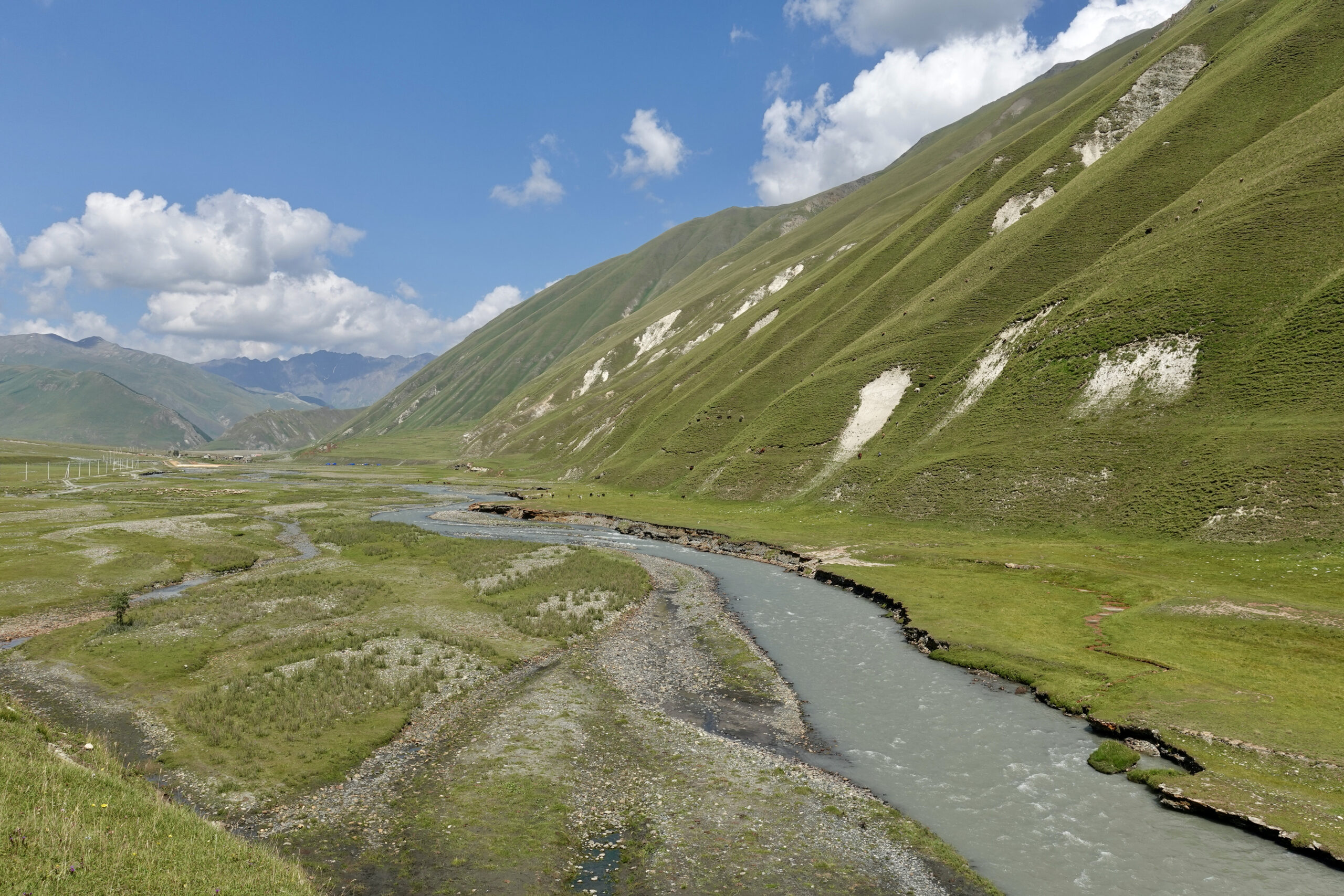
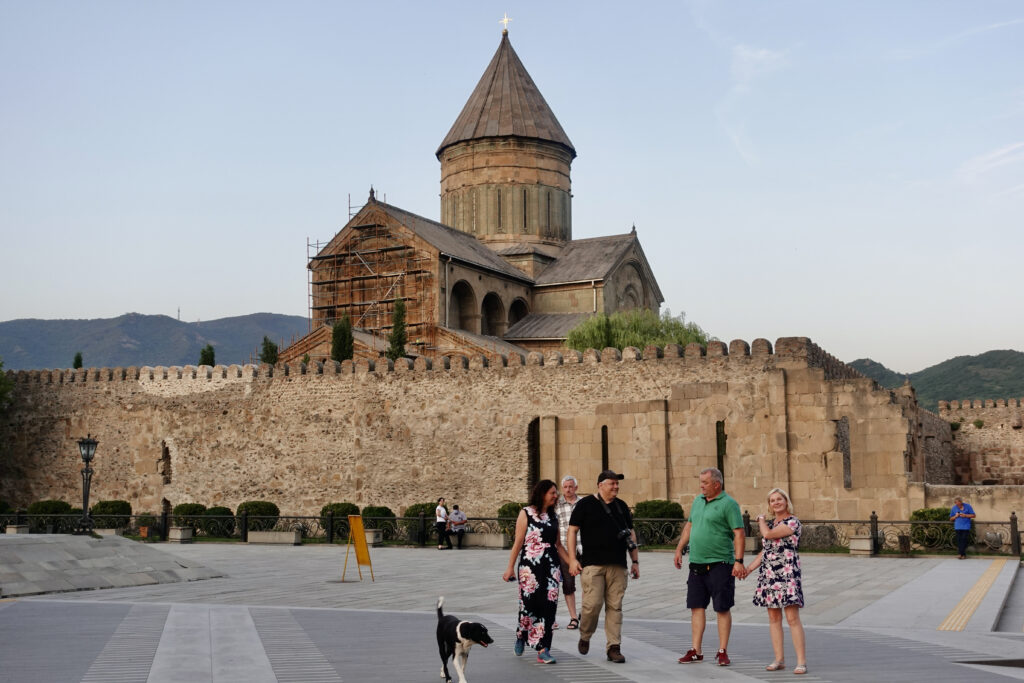
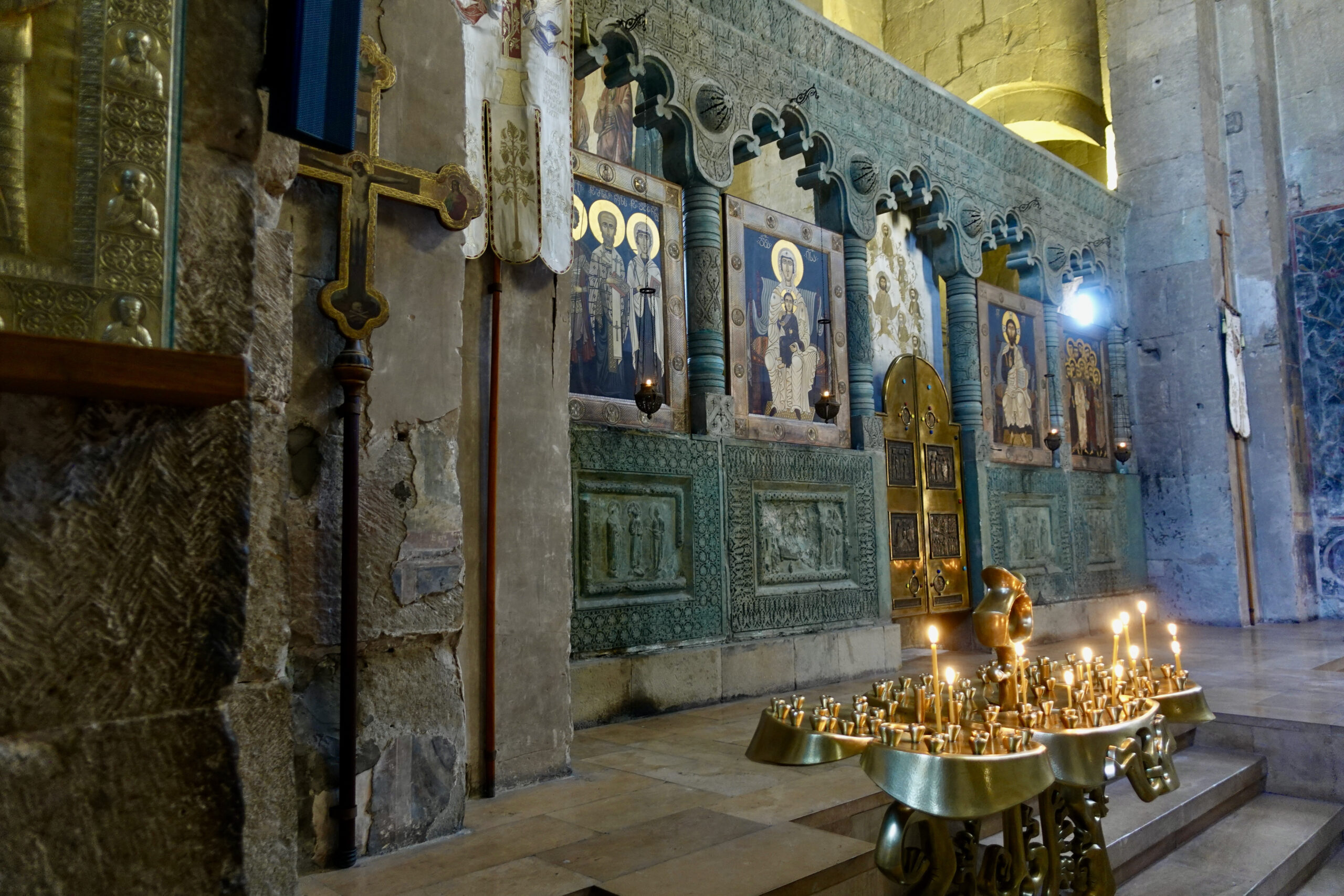
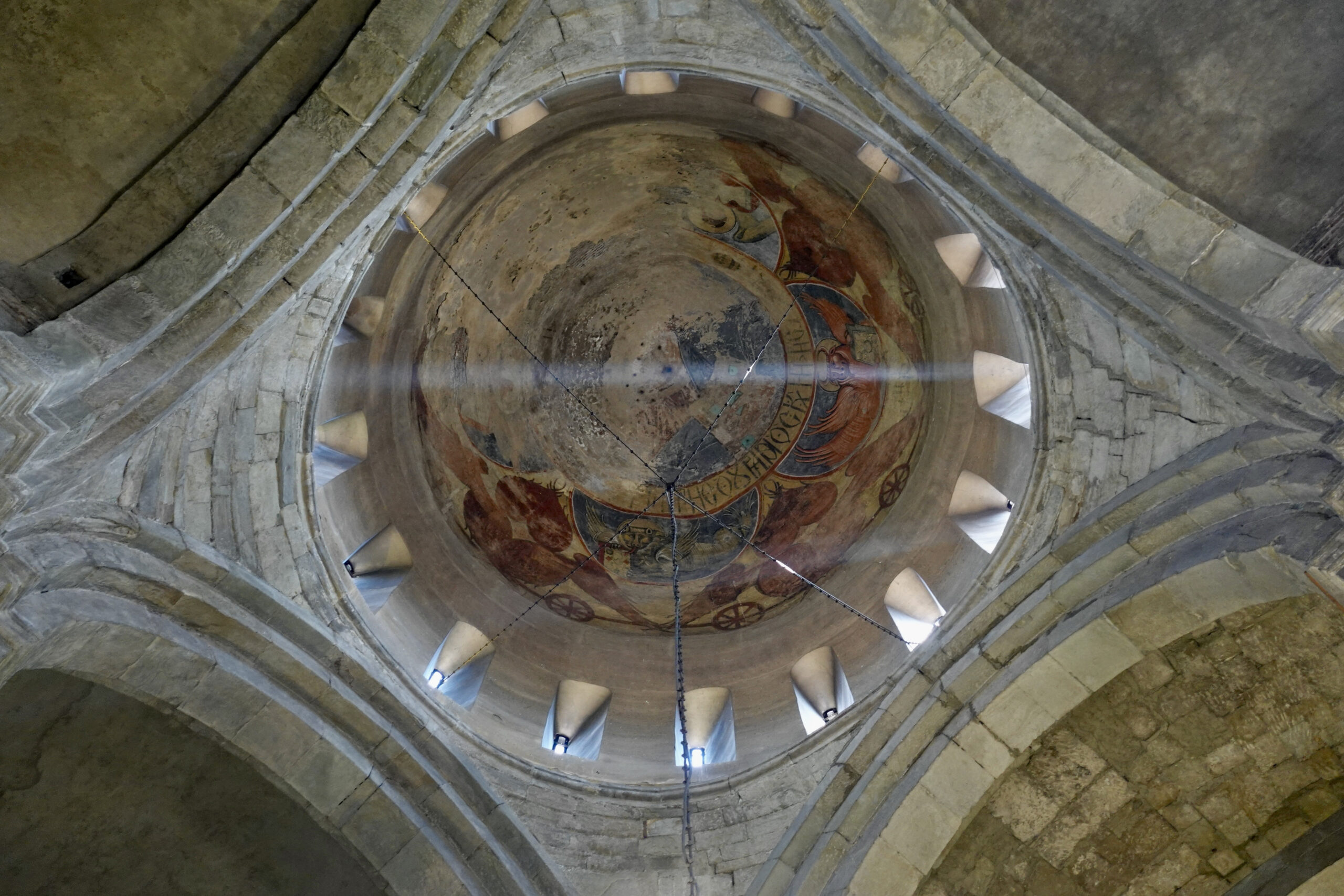
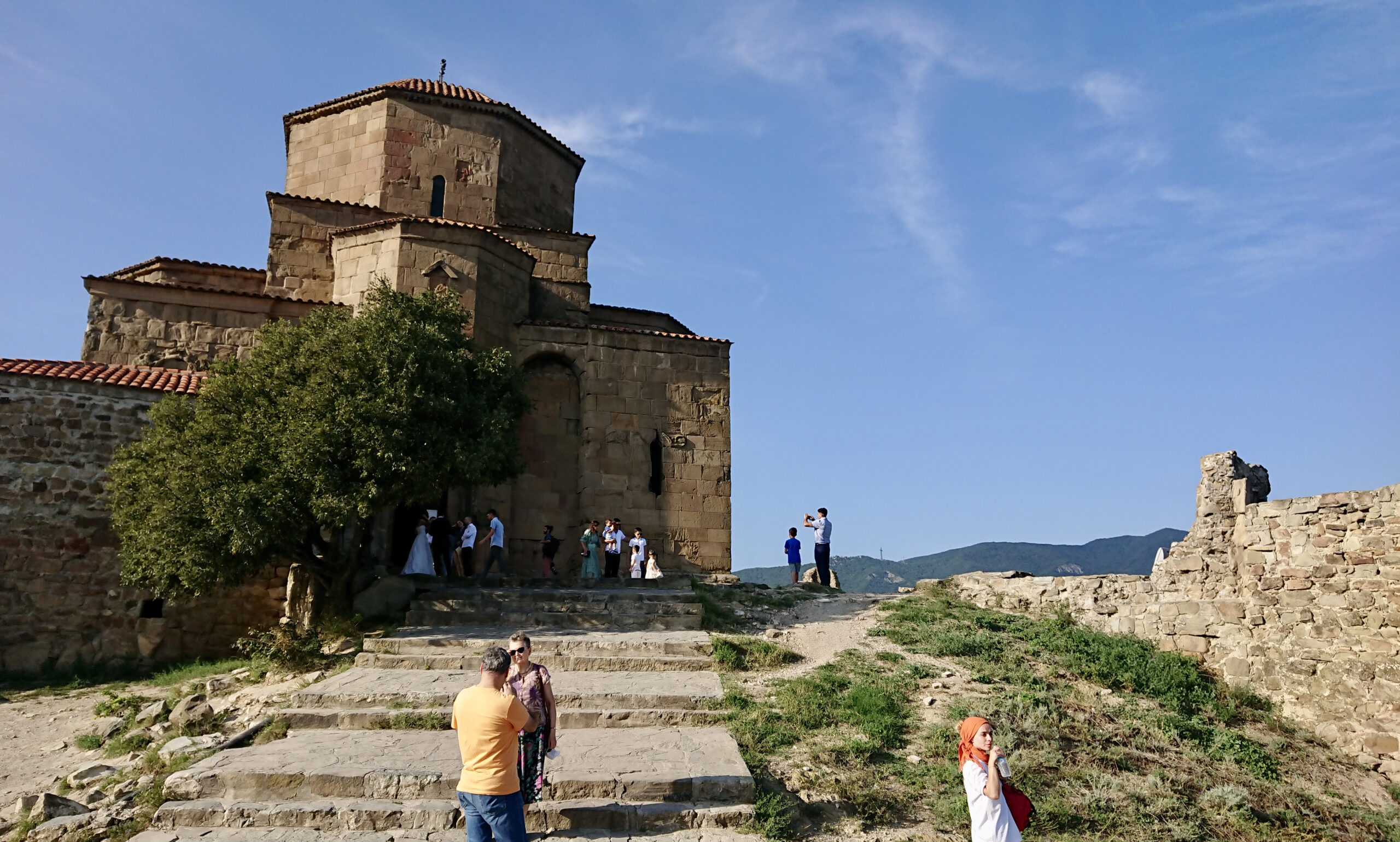
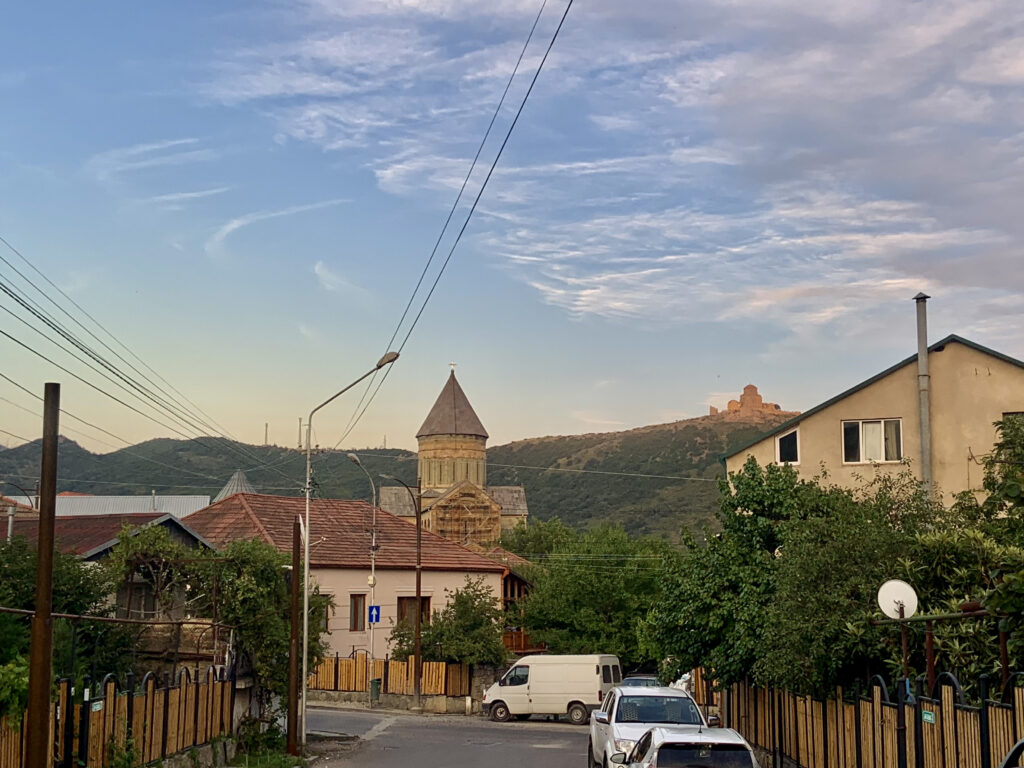
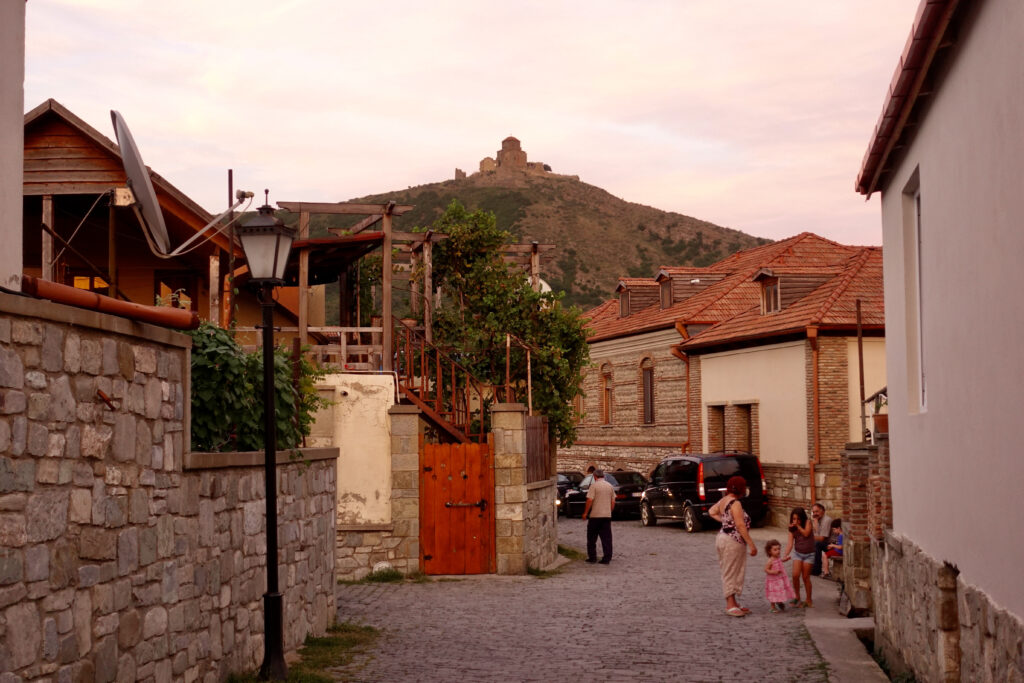
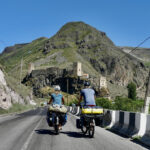
Leave a Reply